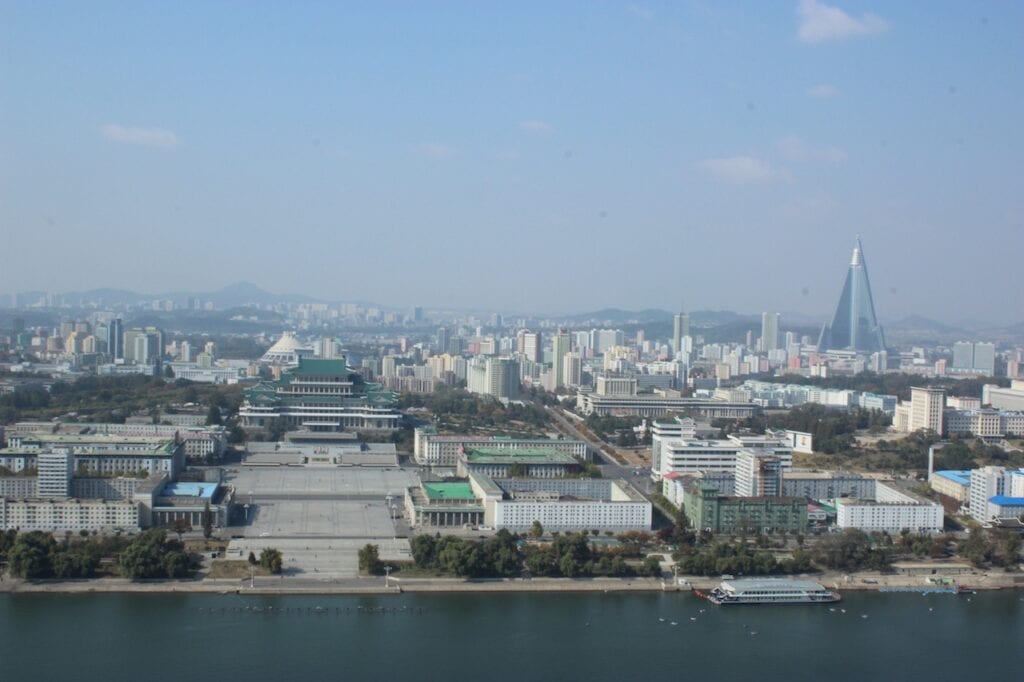
EDITOR'S NOTE: The author, Freddy Lansky, owns the copyrights to all of the rare North Korea photos in this article. For permission to use these photos, please contact him first.
“North Korea, North Korea? Why on god's green earth would you go on a North Korea tour? Why not Australia, or Hawaii, or something like that, but North Korea? What is wrong with you, man?” exclaimed one friend.
“Is North Korea safe to visit,” exclaimed another.
The question of why I was there was on my mind before the trip and during the first few days.
2020 Update – Why I didn't finish publishing this article in 2013.
I took this trip to the DPRK (as North Korea is also known) in October 2013.
I started writing this article shortly after the trip but then decided not to finish and publish it for many reasons.
The main reason was even if you try not to “be political” about a visit to North Korea, the fact is the very act of going is “political,” and I just didn't want to get that kind of attention.
However, I don't plan on going on a tour anytime soon with world travel shutdown due to Coronavirus and my adventure travel days mostly behind me (I went when I was 27, I'm 34 now).
Americans are banned from visiting North Korea by American law as of 2017 anyway.
Another reason for writing this is that in 2019 I started a Points and Credit Card Blog and moved into the travel space on my own. I now want the exposure that such an article would bring.
My goal in this post is to educate you on my experience, what I saw firsthand, and give you an idea of what to expect when going on an organized North Korea tour.
To be clear about the political ramifications or my opinions about visiting: I wouldn't have seen or known enough from a five-day propaganda tour to use such a trip to make any real commentary on the political situation anyways.
I would just be regurgitating whatever I heard on the news or media, which is pointless.
My goal here is only to share my experience.
Most videos and articles I've seen reviewing a North Korean tour tend to skew either on the side of making a propaganda fluff piece for the country or against it.
I'm trying to avoid both and simply provide an account of what I saw.
Table of Contents
- Frequently Asked Questions
- The Tour Experience
- Where do you go on a North Korea tour?
- How much freedom do you have on a DPRK tour?
- Was everything you saw fake in North Korea?
- What’s the deal with North Korean propaganda?
- How much does a North Korea tour cost?
- Is North Korea safe to visit, and would you recommend going?
- About the Author
Frequently Asked Questions
Why travel to North Korea?
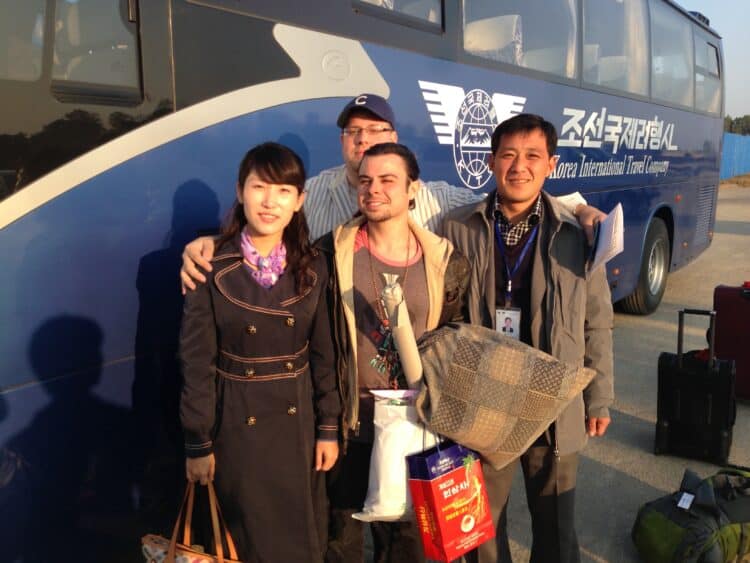
To get us started, I'll answer my friend's question “why not Hawaii or Australia?”
Since I work online and travel for fun, and all of the places I've been in 2012/13 are about sun, sand, and surf, I wanted to do something a little different.
News about the loosening of travel restrictions for tourism by the new leader, Kim Jong Un, has been spreading around the backpacking community for the last year.
You can now visit any time of the year, visit many cities and sites that were previously inaccessible, and they don’t search your bags or take your phones.
I discovered the rumor that you have a lot more personal freedom than what a tourist could've expected a few years ago was correct.
It fascinated me how North Korea has been hermetically sealed off for nearly 60 years and is only now just starting to open up.
I wanted to see what it was like for myself. This is probably the main reason most of the other travelers joined the tour.
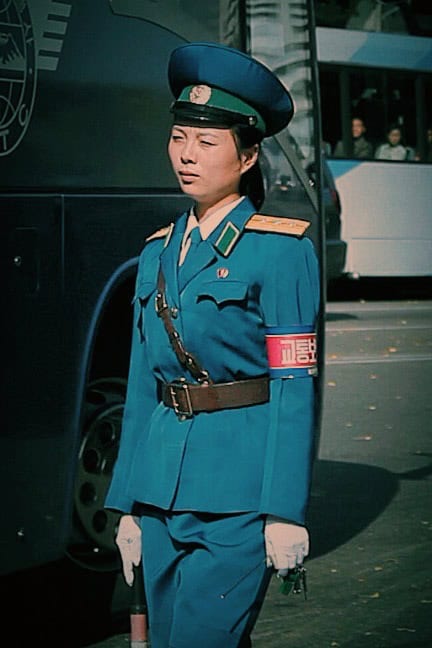
The thought of seeing what a bonafide communist country looked like seemed to be the closest thing to time travel that the world could offer. That alone, for me, was reason enough to go.
The final nail in the coffin was meeting a guy at a weekly Couchsurfing meet-up in Atlanta who told me all about his trip to North Korea, showing me all the pictures and telling me how incredible it was.
Jealousy finally got the best of me, and I said, “fuck it, I am going to North Korea and booking my flight tonight,” and I did.
I got a lot more out of the trip and learned a lot more about myself, the world we live in, and North Korea than I ever expected.
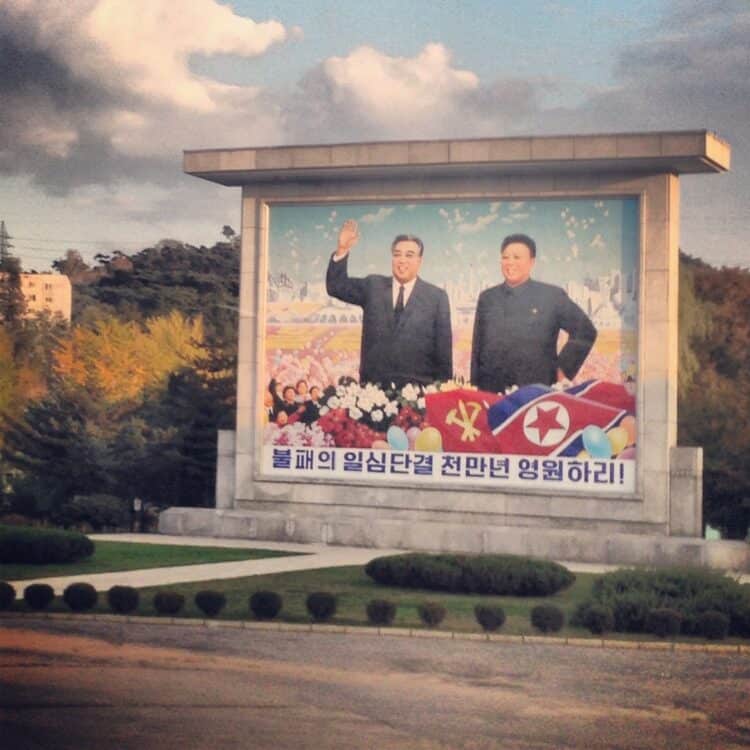
What type of traveler visits DPRK?
Well, besides Dennis Rodman…but I digress.
Everyone in our tour group was a hardcore travel junkie, like mega-hardcore travel junkie, like “the only purpose I have in life is to travel my ass off” type people.
Obviously, I hit it off almost right away with everyone on the trip.
The group was almost exclusively male between the ages of 23 and 38. The largest group of visitors to North Korea is Chinese, followed by Americans.
Yup, Americans were the #2 most common nationality for North Korean tourism until banned in 2017.
In our group, there were also a few Polish guys, one hilarious Russian dude, and a few Canadians, but about half our tour group, including our guide, was American.
What tour company did you use?
There used to be only one tour company that offered tours to North Korea, Koryo Tours, which still operates and has the most pristine reputation.
Since then, many tour companies have moved into North Korean tourism.
The company I used is the only company that caters exclusively to backpackers, Young Pioneers Tours, or YPT as they are frequently known.
They cater mainly to the 20s to early 40s crowd.
The idea of traveling to North Korea with a group of people my own age instead of with a bunch of seniors also got me more interested.
Almost everyone had visited dozens of other countries, and virtually everyone in the group spoke at least three languages and lived abroad at least once.
So, Americans can visit North Korea? 2017 update: no!
As of the time I went, October 2013, Americans were allowed into North Korea with no problem with either American law or North Korean law.
Before 2012, Americans were not permitted by the North Koreans to visit for tourism purposes.
In Sept 2017, the Donald Trump administration banned Americans from visiting North Korea.
So as you can see, there was only a 4-5 year window between the time that North Korea allowed Americans to the time the US Department of State shut down tourism to North Korea.
If I ever end up in legal trouble from this point, I want to emphasize: my visit was legal, according to both countries at the time (2013).
But if you are an American going now, even if you go on another passport, you are putting yourself at tremendous risk of falling afoul of US law as of 2020. Don't do it!
2020 Update: due to the pandemic, the North Korea borders are completely shut, including to tourists probably until at least 2021.

Warning for USA Visa Waiver Countries
As of 2019, if you belong to any country on the USA Visa Waiver Program such as the UK, Australia, France, or Chile and have visited North Korea anytime since 2011, you will no longer be eligible for a visa waiver and will have to apply for a US Visa.
For citizens who live in those countries, would US immigration authorities ever know you went if you don't make a stink about it on social media and keep a low profile?
They probably would not, BUT you'd be taking the risk of being denied admission to the United States and having to apply for a regular visa for every visit.
Even once the COVID-19 pandemic ends, you should not travel to North Korea if you are in one of the 38 countries on the Visa Waiver Program and plan on ever visiting the United States. At least until the law changes.
This is not a complete list of the legal and political ramifications you may have from visiting North Korea.
Each country has its own rules regarding North Korea, but generally speaking, if you are not American and not in one of the 38 Visa Waiver Countries with plans to visit ever visit the US, you shouldn't have issues with your home country.
However, you'd still need to wait until North Korea opens its borders as they are closed to tourism for the indefinite future due to the pandemic.
Also, if you are a dual citizen of South Korea and another country and go to North Korea without prior authorization on your other passport, you could land yourself in hot water in South Korea.
If you have South Korean nationality, don't live in South Korea, and enter North Korea on another passport, I would advise you not to tell anyone on the tour you are South Korean.
Can you visit North Korea on your own?
Unless you are perhaps a Chinese, Russian, or Malaysian in the DPRK on business, virtually nobody can enter North Korea without a guide.
I should make it clear at this point that independent travel to North Korea by westerners is still not allowed.
You have to go through an independent tour company that works closely with the DPRK government’s tourism arm known as the KITC (Korean International Tour Company).
The tour companies and guides want to give you the best trip possible, but they have to work within the restrictions of KITC.
Although those restrictions have loosened in recent years, they're still very strict.
If you don't want to go on a guided North Korea tour, you may be able to hire a private guide for a custom itinerary, but this is very expensive, and you'd still be very limited on what you can do.
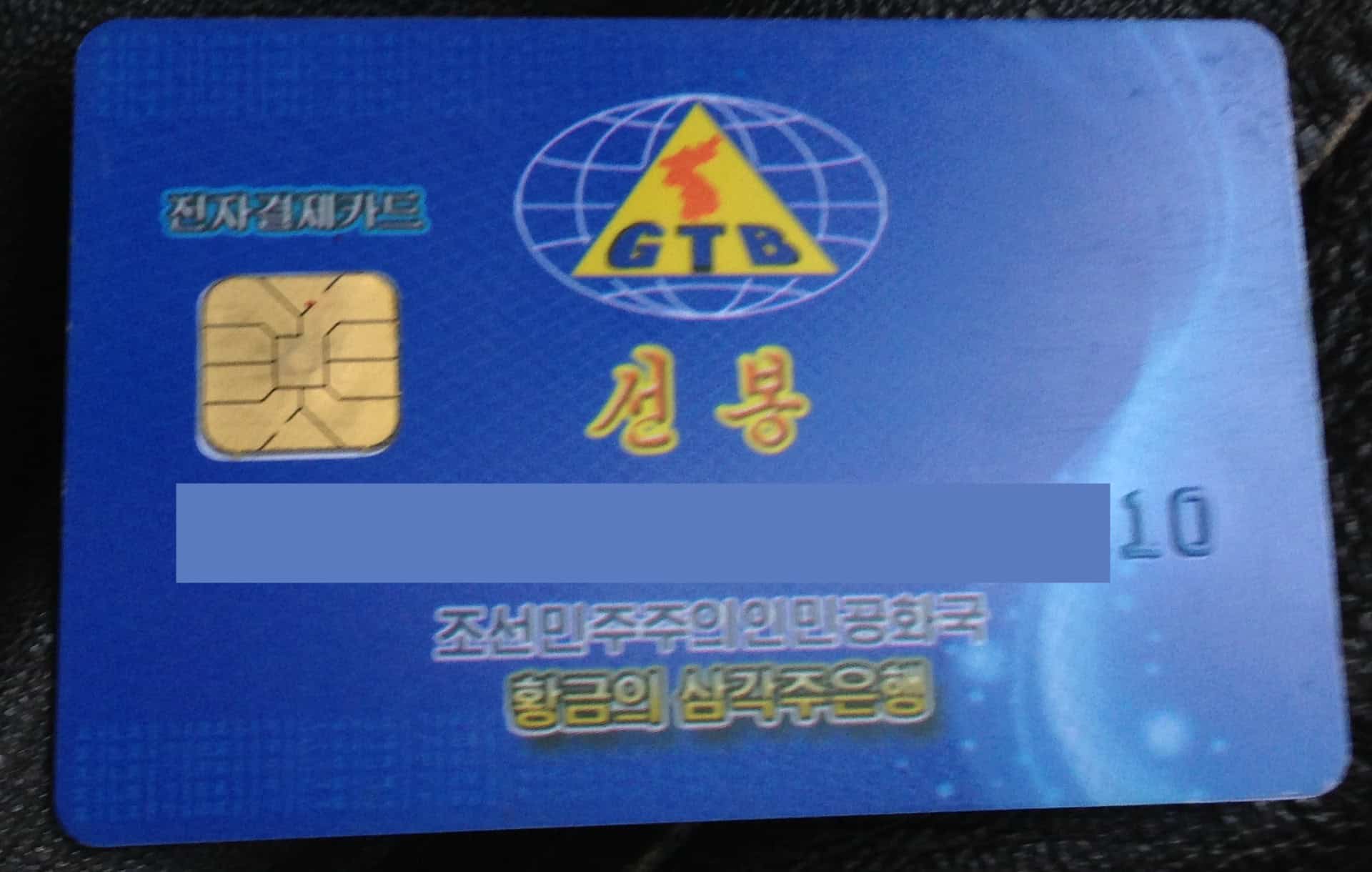
How do you get to North Korea?
Getting to North Korea can range from slightly difficult to logistical nightmare.
The hardest part of any trip to Asia is getting a Chinese visa, but I already knew this since I’d been to China before.
You have to get a Chinese Visa to go to the DPRK because all DPRK tours start and end in China.
Most DPRK and Chinese tour companies will tell you getting a Chinese visa is a “piece of cake” and can easily handle it yourself. That is a bit of an exaggeration.
Getting a Chinese visa can range from slightly difficult to a colossal pain in the ass, especially if your city doesn’t have a Chinese Consulate, Embassy, or Visa Office.
You have a lot of forms to fill out, and you also have to give the consulate:
- scans of your full itinerary
- two passport photos
- proof of a plane ticket in and out of China
- proof you have enough money to support yourself
- color copy of your passport
If you’ve visited China before, they’ll need a copy of the visa from your previous trip, even if it’s on an expired passport.
You’ll also have to explain to the consulate/embassy why you’ll need a double-entry visa.
Other than that, you also have to apply for a North Korean visa through your tour company.
You'll need to pay for the tour with a bank transfer.
If you don't want to deal with all the logistical mess, you can pay various “passport agencies” to deal with all the hassle of getting the Chinese visa for a fee.
Other than that you have a few small forms to fill out for the North Korean visa.
2018 Update: China now has a 72-144 hour visa waiver program for many western nationalities that you can use to go to North Korea as long as you don't spend more than 72 hours in China on either side of your trip.
2020 Update: This program is paused due to the COVID-19 pandemic, it remains to be seen if they will reactivate it anytime soon.
You’ll also need to book your round trip plane ticket to Beijing on your own.
However, hard work brings the most delicious rewards: five days of access to the most secretive nation on earth.
The Tour Experience
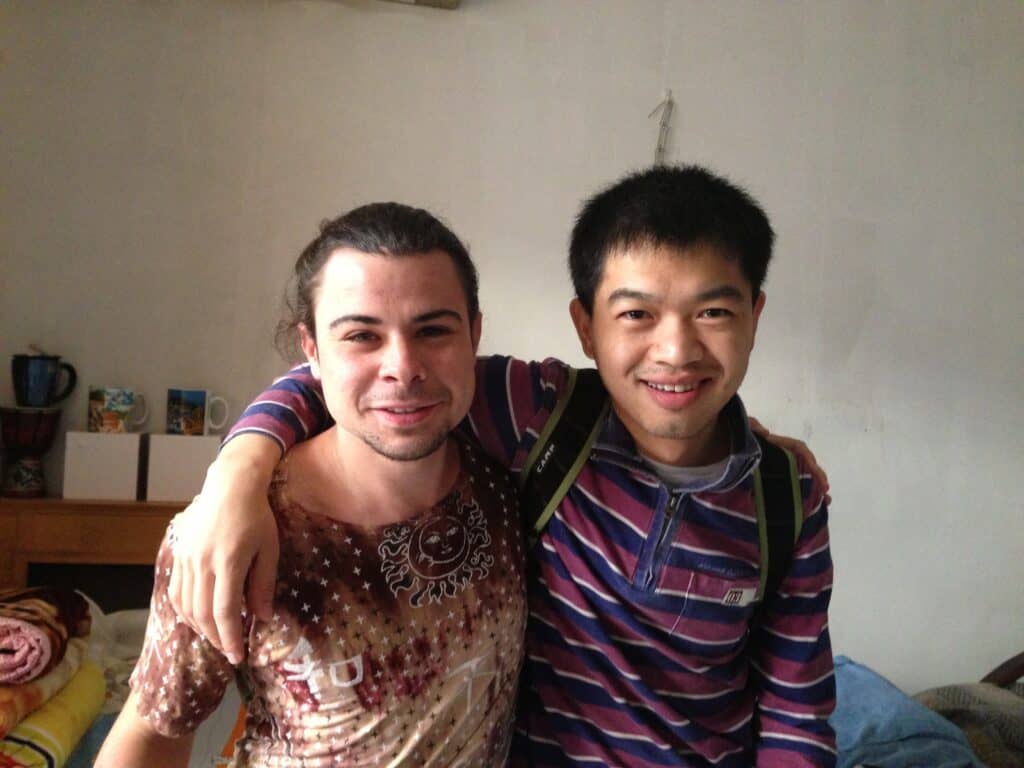
Beijing before the tour
Virtually all tours start in Beijing, where you can either fly or take the train into Pyongyang.
The day before the tour, there is a meeting where your guide will give you your DPRK visas and a brief rundown on taboos to avoid while in the country and other vital information.
Part of the experience of going to North Korea is taking the train.
Unfortunately, Americans were not allowed to take the train at the time I did the tour. I had to fly in from Beijing Airport.

Check-in at Beijing Airport
Check-in at Beijing Airport was uneventful; the process was similar to any other commercial flight.
As we reached the terminal where we were taking off, I quickly realized tourists only account for maybe 25% of the passengers.
The majority of the passengers seemed to be either diplomats or high level North Korean politicians.
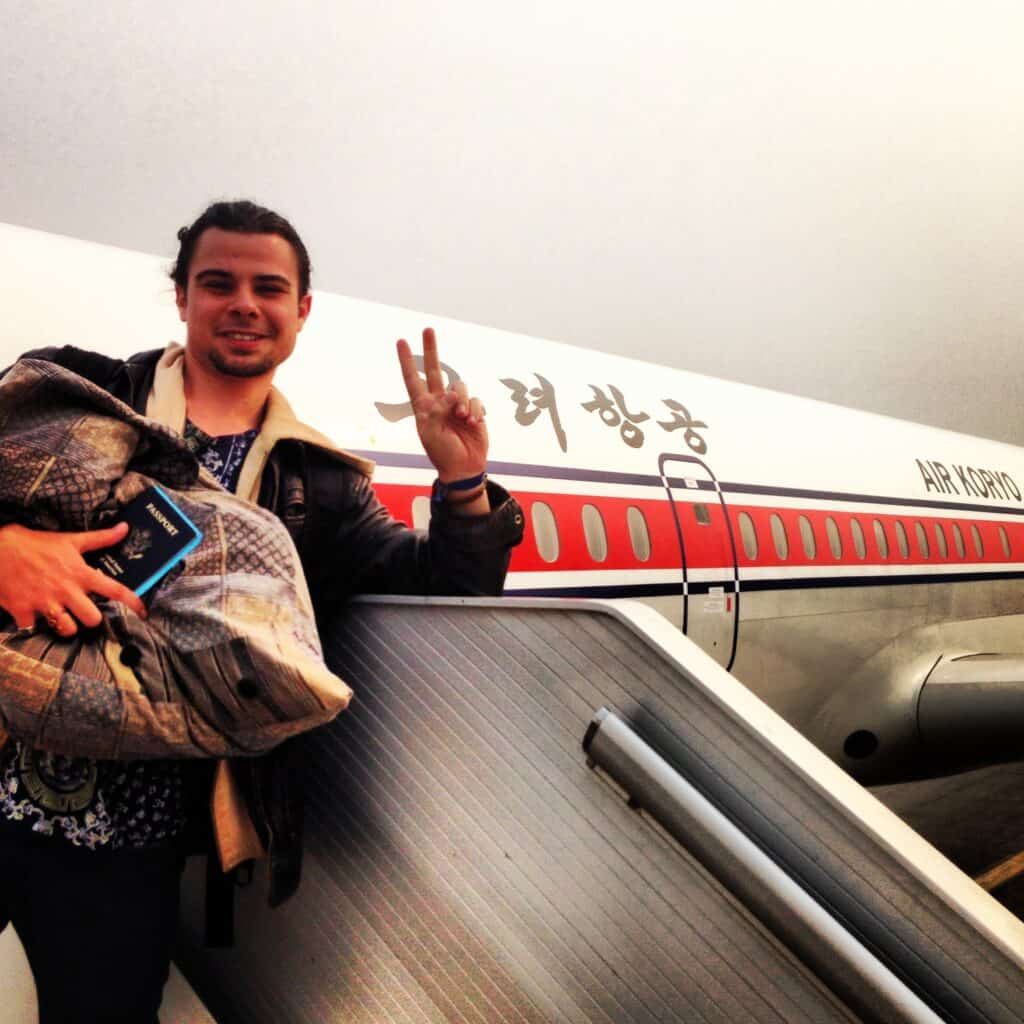
Air Koryo review: a 1-star airline
Despite being the world's only 1-star airline, I found the plane and service to be fine.
If you are an aviation geek, DPRK would be heaven as Air Koryo uses a bunch of older aircraft that are no longer in use for passenger service outside of the country.
They served us a small meal and a beer and handed us a magazine filled with propaganda.
The “in-flight entertainment” on the overhead screen was various tracks from the Moranbong band.
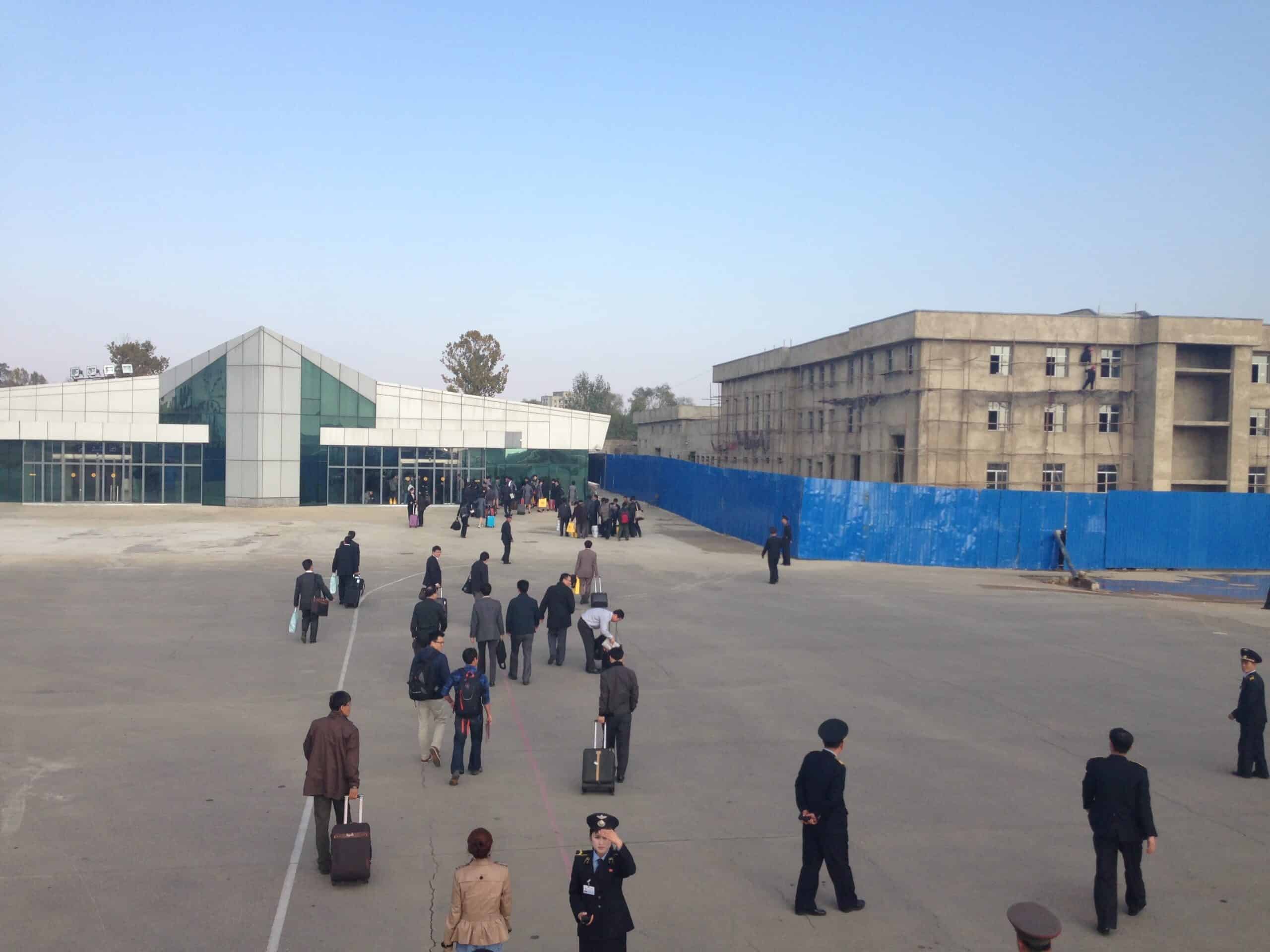
Pyongyang Airport
I don't have much to say about the new Pyongyang airport in the DPRK.
When I was there in 2013, the old airport had been torn down, and the “airport” was nothing more than a landing strip with a small one-room makeshift building.
The new airport was still under construction. I've since heard it's quite nice and up to international standards.
The Yanggakdo Hotel
We stayed at the 4-star Yankkhado Hotel, which is the most popular hotel for foreigners.
95% or more of foreign tourists stay in either the Yanggakdo Hotel or the more upscale “5-star” Koryo Hotel.
There are other hotels, but they are mainly for Chinese travelers as I think these are the only two hotels in Pyongyang that have the basic amenities a foreigner would expect.
But I could be wrong. Let me know in the comments!
The Yanggakdo Hotel is located on an island in the middle of the Taedong River. You can go outside, but you are not allowed to leave the island alone.
Legend has it (jokingly) that they have filled the river with sharks!
There are many myths and legends about the Yanggakdo Hotel, especially some “secret floors,” which I won't get into in this article.

The rooms in the Yanggakdo
The rooms were simple enough; they looked like any 3-star hotel would, but with a retro look and feel, including a radio I couldn't figure out how to work.
According to urban legend, they're bugged, but I doubt we were important enough for them to bother listening in on our rooms.
One of the most striking things is when you turn on the TV there is only one local channel, Koryo TV.
In the hotel, there were a few foreign channels, but I'm told outside of hotels with tourists, the only station is Koryo TV.
This channel is pretty much nothing but a reporter droning on and on for hours about the current and past exploits of Kim Il Sung, Kim Jong Il, and his son and the current leader of the DPRK, Kim Jong Un.
Once you arrive at the hotel from the airport and turn on the TV and see this, it hits you that you are really in North Korea!
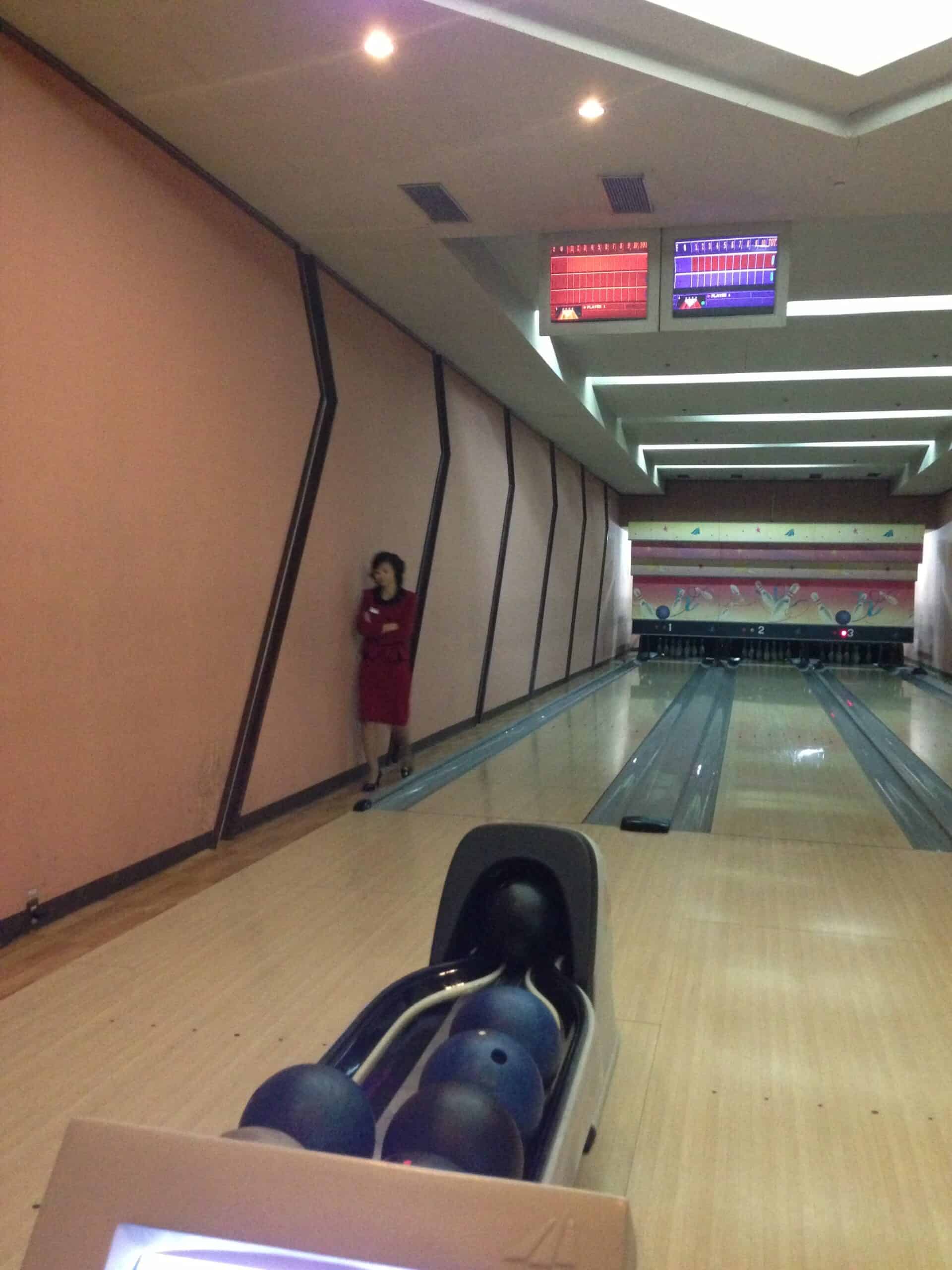
The Yanggakdo Hotel has a bowling alley downstairs.
That is probably the most important thing you need to know as you’ll spending plenty of nights down there bowling and laughing with chain-smoking Chinese business people.
(Many Chinese are now doing business in Pyongyang and starting companies in North Korea.)
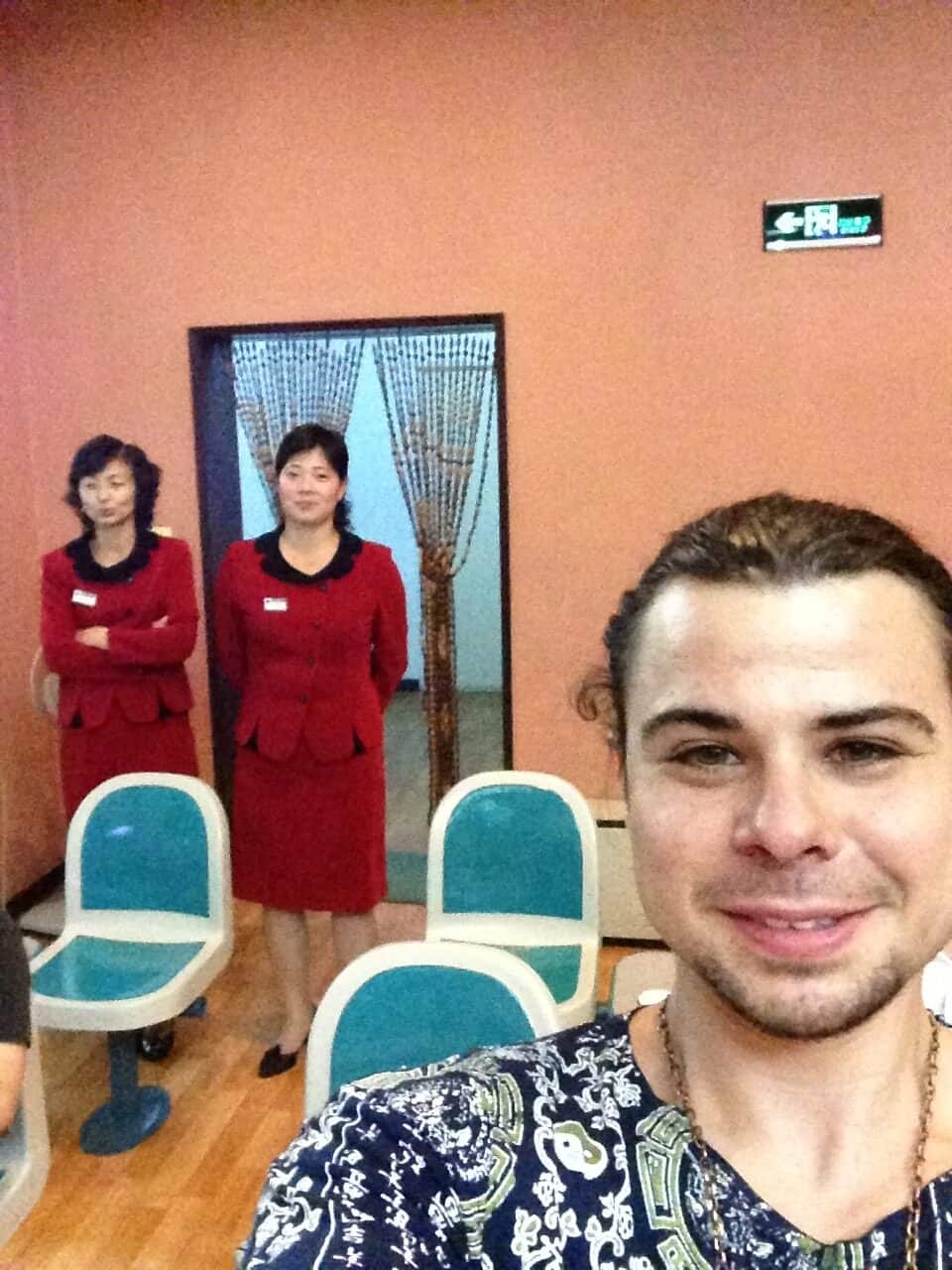
There is also a sketchy casino downstairs.
And a rather famous turtle in the lobby that is in way too small a tank for his size. It's left to just swim aimlessly back and forth.
There is a brewery on the premise that offers the most delicious beer.
Virtually every place we went to had its own brewery and tanks.
The Democratic People’s Republic of Korea does not play around when it comes to their beer.
There is no wifi anywhere in the country as of the time I went, but you can send or receive an email for a whopping $2-$5 each.
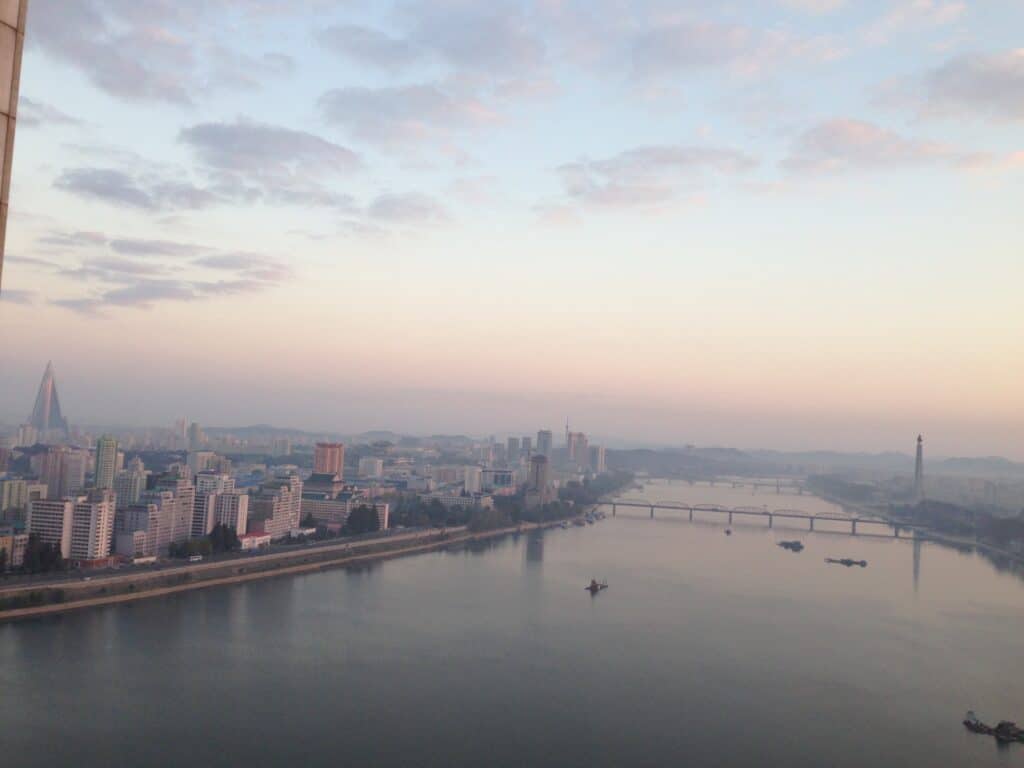
The rooms were nice enough, but we hardly spent any time in them.
The view from our 28th-floor room was incredible, though.
The hotel has around 48 floors, but as far as I could tell was empty.
Everywhere we went felt empty and as though things were “turned on” just for us much of the time.
Pyongyang: an extremely clean city
The first thing you’ll notice almost right away is that Pyongyang is probably the most beautiful city in Northeast Asia.
The water and air are clean, there is an absurd amount of green space, and the lack of heavy traffic and corporate signage everywhere is a welcome break from places like Beijing and Seoul.
Note: this is starting to change as much to my surprise there were quite a few cars during rush hour, and we did see some advertisements for a car company.
There is also virtually no trash in the city, at least in the parts we went through.
After studying where we were taken when writing this article, I realized I only saw a tiny section of Pyongyang.
Still, even when leaving town, it didn't seem like the non-touristy parts we passed were much different.
It seemed like everyone in the city has their basic needs taken care of, and you didn't see any poverty or homelessness.
One should keep in mind, however, that Pyongyang is supposedly reserved for the most connected and loyal 10% of North Koreas in the country (at least that's what the media says, I have no way of confirming this or not).
Where do you go on a North Korea tour?
I chose to do the Political Interest Tour (note: the tour has changed a bit since 2013 to the current time this article is being published in 2020).
These days, itineraries are pretty flexible, and there are plenty to choose from.
Still, virtually all tours will include:
- Various monuments in Pyongyang
- DMZ
- Children’s Palace, where you’ll see a performance from North Korean’s most gifted children
- The nearby town of Kaesong (probably)
The remaining sites depend on the “theme” of your itinerary and may change depending on conditions.
Things we got to do that were unique to our trip, for example, were a visit to a steel factory and riding roller coasters with some North Korean soldiers (surely something I won’t forget).
But your trip might include other sites and activities unique to your visit.
Truth be told, all tour companies such as Koryo and YPT try to make it sound like every tour is unique and different, but about 75-80% of the tour is fixed to particular destinations such as Kaesong City, the DMZ, and the main sites and monuments in Pyongyang.
My tour visited the main sites in Pyongyang, Kaesong City, and the DMZ.
Unique to our tour was a visit to a farm and steel factory in the seaside village of Nampho (also spelled Nampo) where most tourists usually don't go.
I won't bore you with every single detail, but here is a rough itinerary of the most interesting places we visited.
Virtually every visit begins with a Korean lady dressed in traditional clothing.
She comes out to tell you how many times Kim Il Sung and Kim Jong Il visited the factory, museum, hospital, etc. you are currently visiting and how their advice helped improve it.
Then the lady magically disappears, and you are usually free to walk around and do your thing and take some photos as long as you don't wander too far.
(And believe me, if you stray too far, the guides will freak out, I tried.)
Pyongyang tourist sites
Most of the tour took place in Pyongyang. I'll list the sites we visited below.
Unless you visit the economic zone of Rason on a separate trip, virtually every tour will cover the majority of the places in Pyongyang mentioned below.

About 80% of the sites you'll see in Pyongyang will be limited to a small stretch of land, hugging the west bank of the Taedong River between Mansundae Hill and Kim Il Sung Square.
Other nearby sites just north of the map include the Arch of Triumph, Kim Il Sung University, and the Juche Tower on the East bank of the river.
You'll be bussed around to all the sites, and in one case, you may get to take the subway.
You'll quickly realize you could easily walk to almost all of the significant sites, but they choose to bus you around anyways, the reasons for which I won't speculate.
I've included a map showing you the two hotels where virtually all western tourists on a guided tour stay (Koryo and Yanggakdo hotels) as well as where the vast majority of sites are located.
(For the few places not on the map, they are mostly just outside what's shown.)

Mansudae Hill Grand Monument
The Mansudae Hill Grand Monument is a large complex with statues.
The central part of the complex is two giant statues of Kim Il Sung and Kim Jong Il.
These are probably the most famous in the entire country, and you've probably seen video footage of it in various news broadcasts.
They are some of the biggest statues I've seen in my life.
Flanked on the sides are two elongated bronze murals of various workers of the “revolution” soldiers, farmers, and the like being patriotic, not all that different from some of the murals done in Eastern Europe before the fall of communism there.

Part of your tour to the DPRK will be to buy flowers and leave them by the monument and then bow down to the dear leaders.
The statues are much more massive than the photos would suggest, and like all things DPRK immaculately clean.
We were warned that all photos must show the entire figures from head to toe as photos that cropped them would be considered a form of disrespect.
The Korean Revolution Museum, which was on our itinerary, is nearby.
I don't remember if we went inside or not. (I don't think we did; I have no photos.)
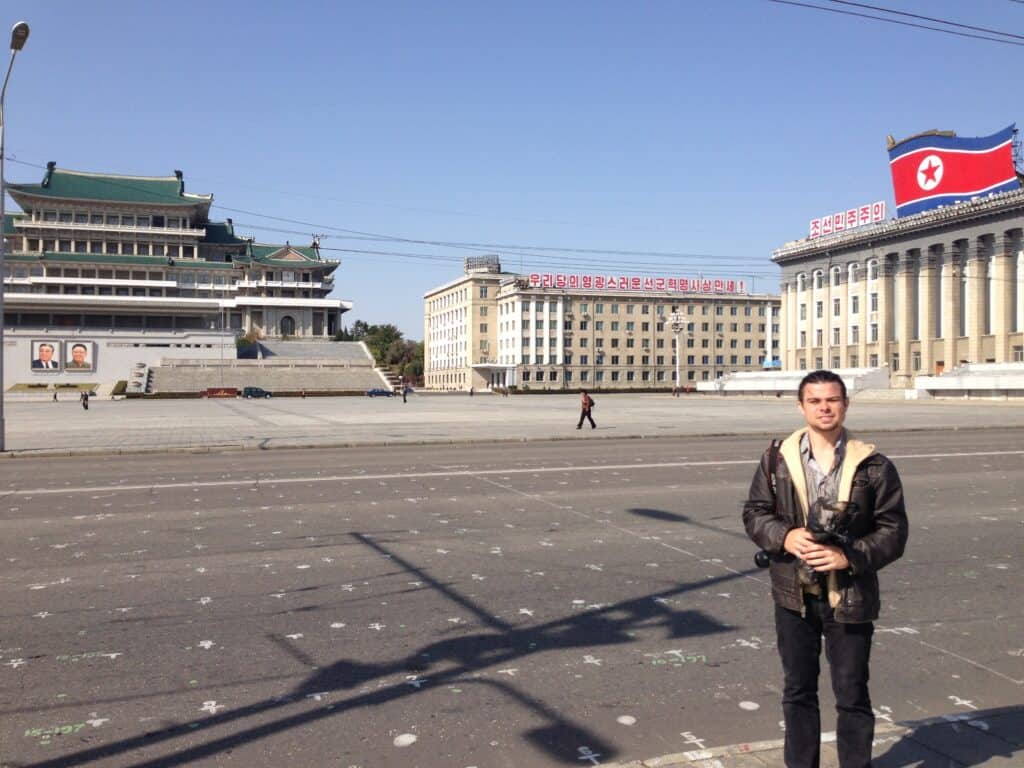
Kim Il Sung Square
If you've ever watched footage of CNN announcing North Korea's latest nuclear ambitions with some video reel of soldiers and large model rockets being marched on parade by the army, it's here in Kim Il Sung Square.
Of course, on the day I went, things were much quieter, even desolate.

You can see marks on the giant square of where people should stand in an exact location (I guess DPRK was making social distancing markings on the ground before it was cool?).
The square was massive, probably the size of multiple football fields.
Mangyongdae School Children's Palace
The Mangyongdae School Children's Palace is an extra-curricular after school facility, clearly for the most privileged children of North Korea.
Before we entered, a high school-aged girl came outside to give us an explanation of how this building relates to Kim Il Sung, how many times he and Kim Jong Il visited, etc.
On a more exciting, less scripted note, a group of four girls came and talked to us in the best English they could muster saying hello.
My Russian friend took a good photo before they scurried off to class!
During the tour, we were able to walk in on a calligraphy class as well as a music class.
All the kids here were incredibly talented at whatever they were doing.
The building itself is stunning both on the outside and inside.
The inside has vast wide-open spaces and is almost 100% marble. This seemed to be common to nearly all the buildings we were shown.
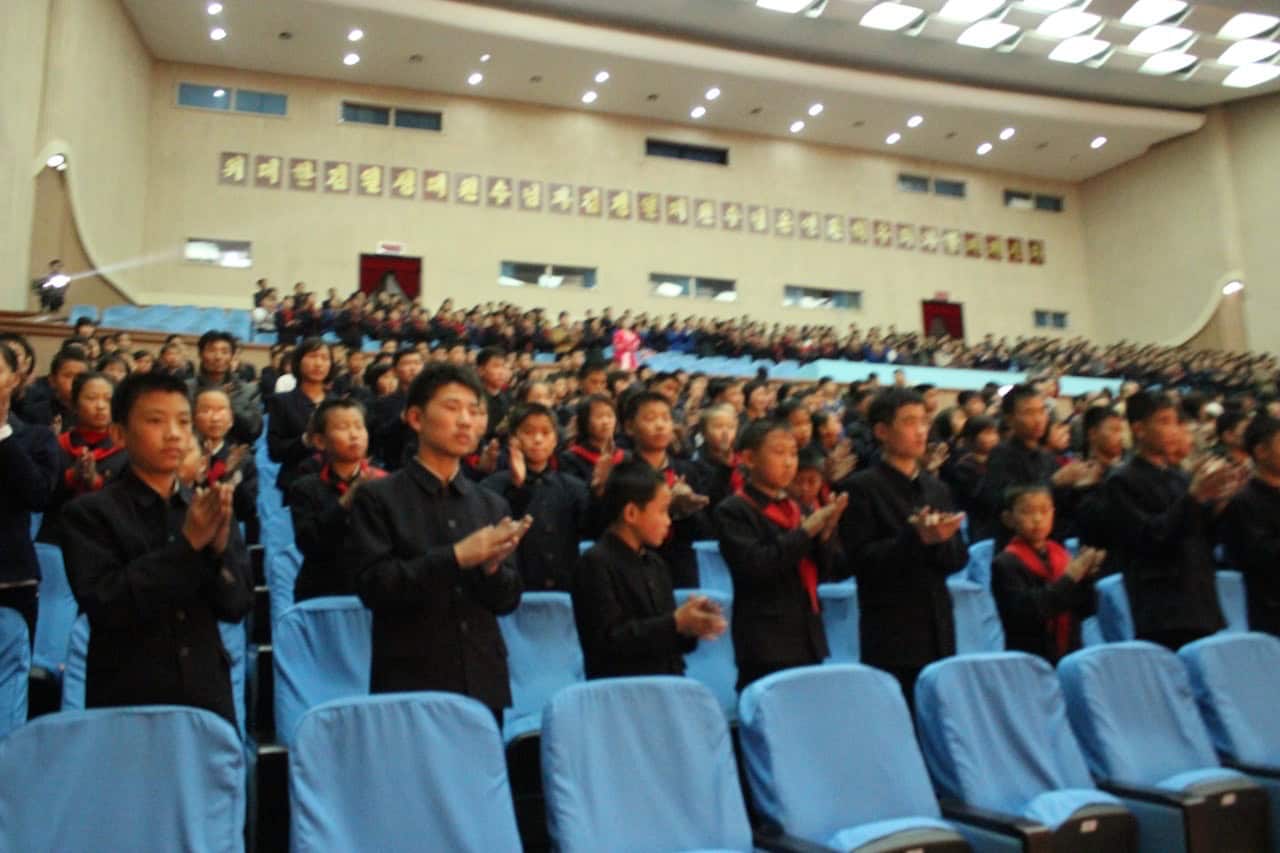
We were then taken to a brief variety show performed in the auditorium by the children, which was very well, perhaps “too well” performed for kids that age.
They did things such as juggling, playing music, short vaudeville scenes, it was a fun show.
If you do a DPRK tour you will almost certainly make a stop here. Check out the Young Pioneers website for more information.
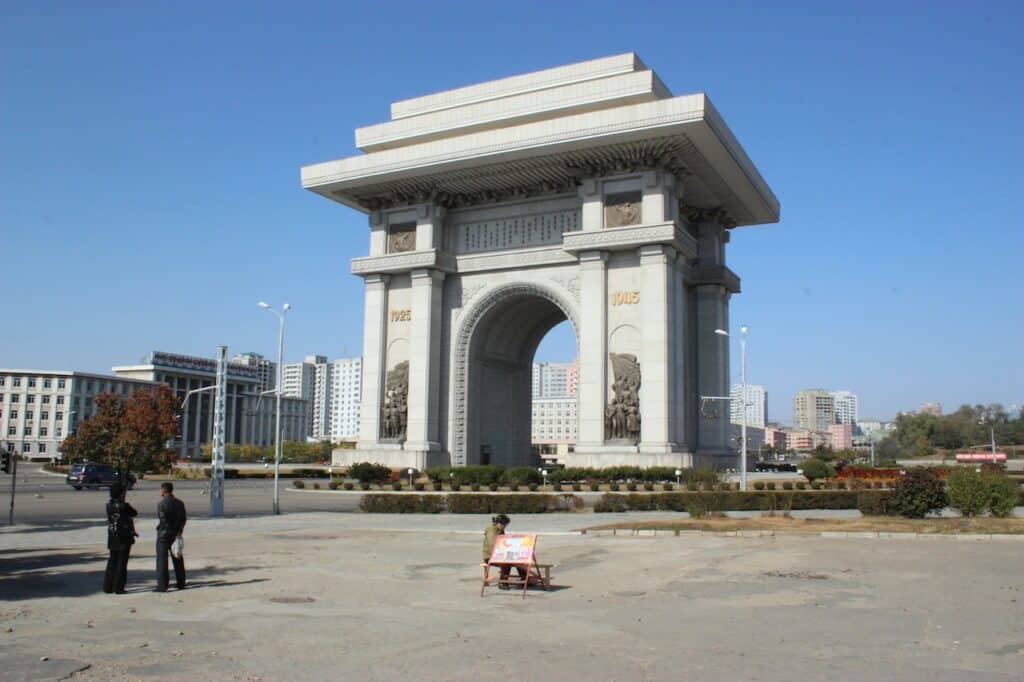
Arch of Triumph
If you noticed this Arch, looks suspiciously like the Arc de Triomphe in France, its because it was modeled after it.
It was made to celebrate Korea overcoming the Japanese imperialists in World War 2 and, like all monuments in North Korea, specifically glorifies the country's founder, Kim Il Sung.
It is the second-largest arch in the world, and its impressive size is not adequately captured in the photos I've taken.
Cars are supposed to drive under the Arch, but we didn't see any vehicles go through it at the time as traffic in North Korea is sparse.
Juche Tower
No doubt, you will get the best views of Pyongyang from this thin, erhmm, “phallic” shaped structure.
Inside is a tiny museum that shows small plaques from “Juche organizations” around the world, including ones from the USA.
It's possible some of these organizations were real during communist times, but some of them were quite funny like “the Juche organization of southern United States thanks Kim Il Sung,” etc.
It's supposed to show countries all around the world subscribe to the “Juche Idea,” which is the North Korean version of “self-reliance” introduced by the country's first founder, Kim Il Sung.
This may have been partially true before communism fell apart in the late 1980s, but these days I find it hard to believe there are dozens of Juche organizations actively working around the world. But who knows, right?
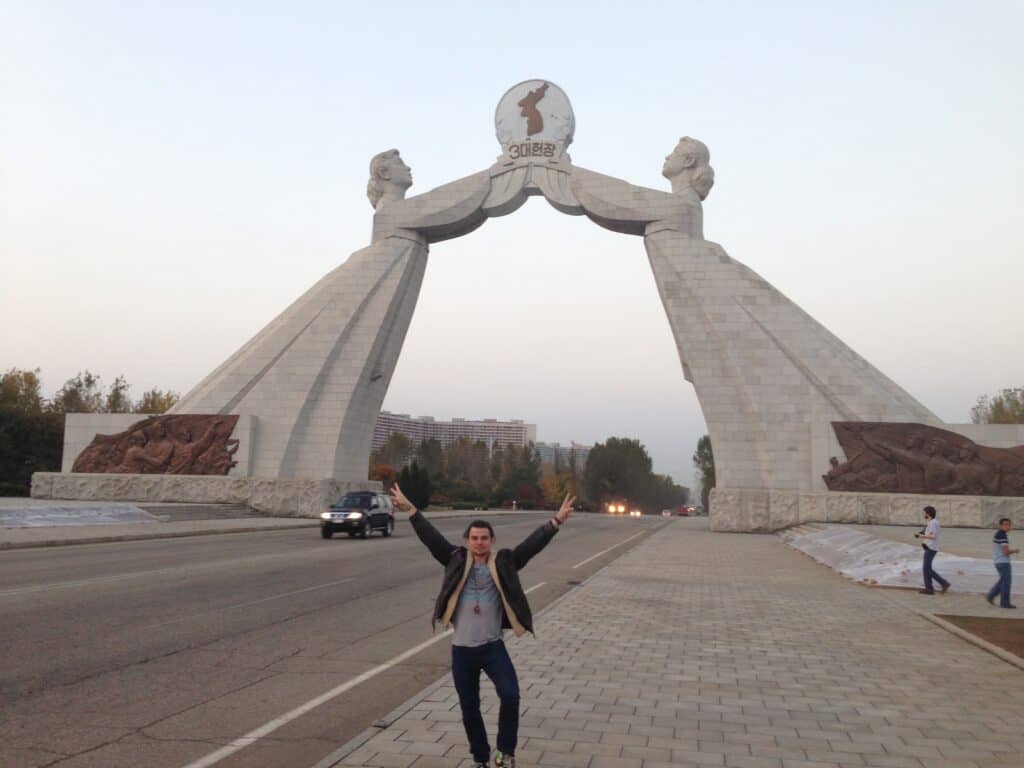
Arch of Reunification
Completed in 2001, The Arch of Reunification is a relatively new monument.
If you go here, it's one of the few chances you'll get (or at least I got) to step foot on the outskirts of Pyongyang.
The arch commemorates the ideas Kim Il Sung had to reunify the Korean peninsula and spans the main highway going into town.
Also, if you visit, they will quickly set up a “rest stop” near the arch for you to buy snacks.
They'll then take it apart right as you leave. DPRK is a weird place man!
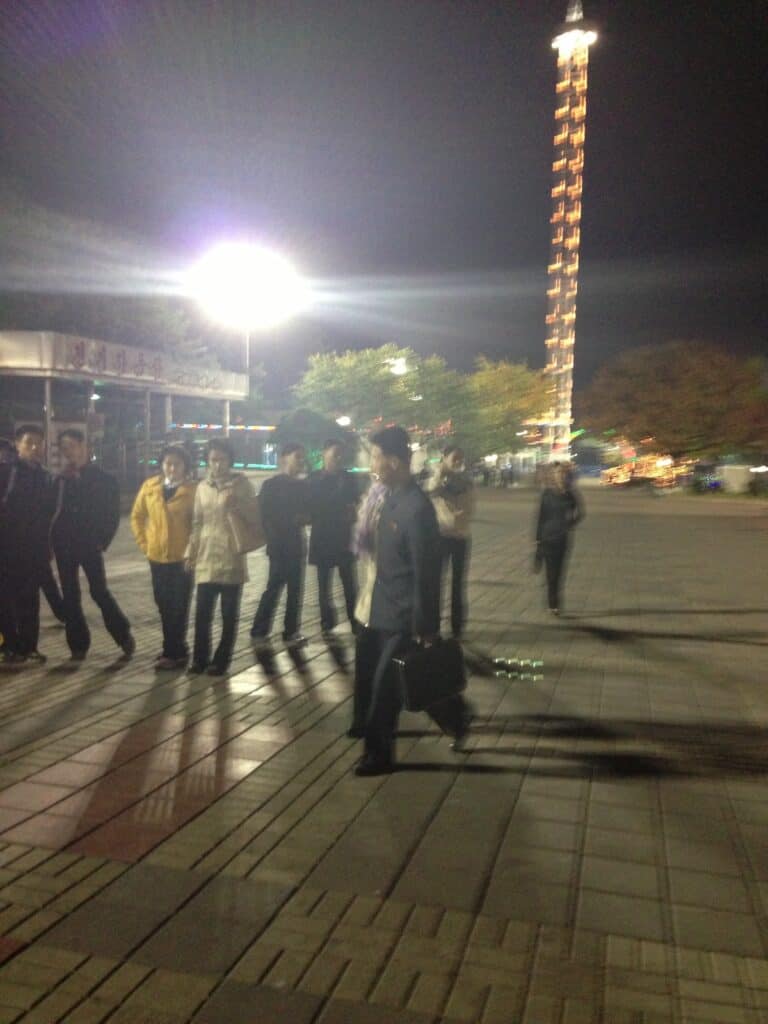
Amusement Park (Possibly…Mangyongdae Funfair)
Have you ever dreamed of riding a roller coaster with a group of North Korean soldiers? We did exactly just that.
I believe the name of the park was the “Mangyongdae Funfair,” but please don't hold me to it as this wasn't on the itinerary!
It was a standard small amusement park with North Korean's just acting just like any people from any country would at an amusement park, having fun with their friends, family, and loved ones.
This was a cool excursion because we got to interact with real North Korean's in the park in a non-scripted fashion, even though, of course, the language barrier limited communication to hand motions and laughing.
Pyongyang Maternity Hospital
Visiting the Pyongyang Maternity Hospital was one of the most interesting and weird parts of our North Korea tour.
This is supposedly one of the best, if not the best hospital in the country.
Everything felt staged, but I guess it is a real hospital.
One weird thing we noticed is there was no soap anywhere, which is a common shortage in socialist countries.
The idea behind taking us to the hospital was to show us how modern North Korea's medical system was. Ironically, it had the exact opposite effect.
My favorite and most obviously staged part was the “Breast Endoscopy Room.”
We were then taken to a tanning bed that was hooked up to some old soviet radio that was supposedly for use with pregnant women to get UV rays.
I was like, “come on; you gotta be kidding me.”
I can hardly blame the Koreans for trying extra hard to impress us, given all the bad press coming out of the country.
It's clearly in their best interest to put their best face forward, even if it meant exaggerating or faking certain parts of the trip.
They then took us to a board room that had a bunch of old books in English on the walls, some of which had nothing to do with medical care such as “The 1997 A+ certification guide to repairing computers.”
A doctor came in and talked to us about North Korea's medical system. We were told anyone who wants care can come to this hospital for treatment.
I looked it up, and it really is supposed to be one of the best hospitals in North Korea, so maybe it wasn't all a facade.
But other people who toured DPRK agree this place felt like one of the most “staged” sites in the country.
Kim Il Sung University
Taking us to Kim Il Sung University was another attempt by North Korea to show how modern they are.
The buildings in the university are stunning both on the inside and out. Virtually everything in the corridors is made out of real marble.
I believe this is the most important and famous university in North Korea. Only the smartest and most privileged North Koreans can study here.
They placed a special emphasis on showing us computers as North Korea is known for restricting their use and having virtually no external internet access.
We had a local student come and explain to us what they do at the university.
From the gist of it, they focus more on math and science than softer liberal arts topics, at least at this particular university, but I could be wrong.

Pyongyang Metro Subway Stations
No trip to DPRK would be complete without a trip down into the subway.
The Pyongyang Metro is one of the deepest in the world; the escalator to go down is ridiculously long.
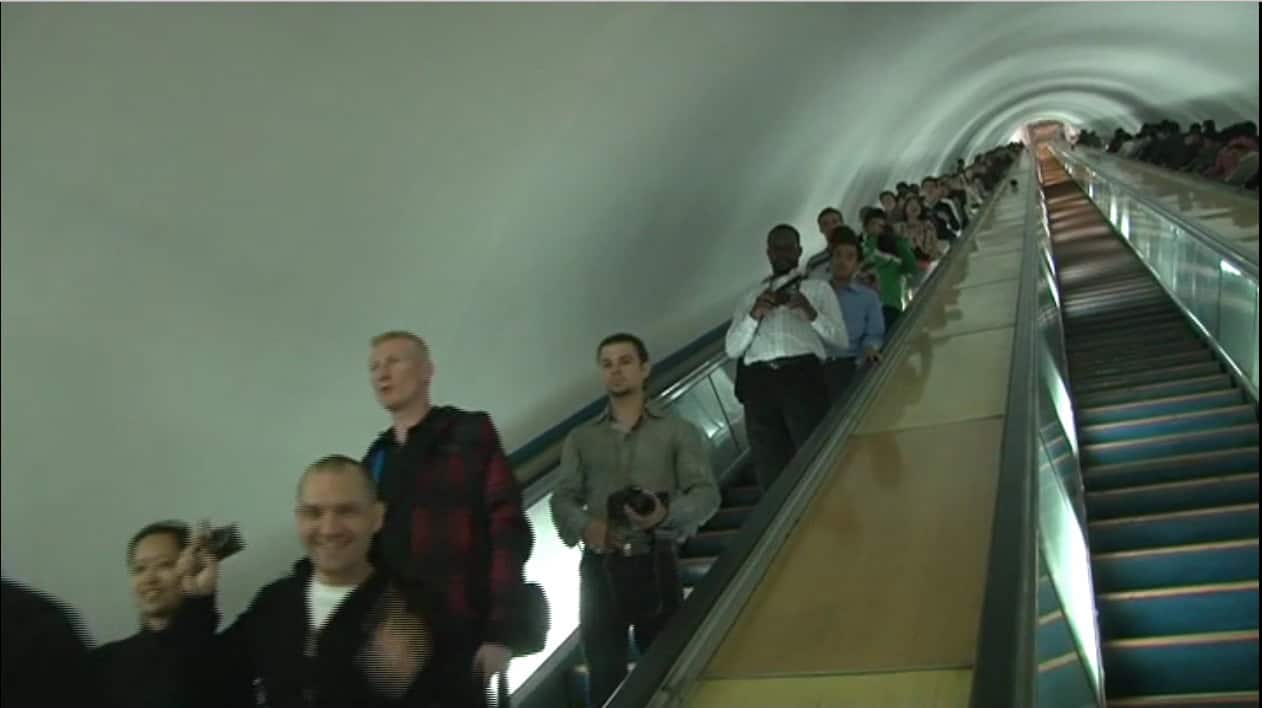
I believe the reason they built it so far underground is so it can double as a nuclear bomb shelter.
Like most communist-built subway stations, they are very opulent, similar to the ones you'd see in St Petersburg, Russia.
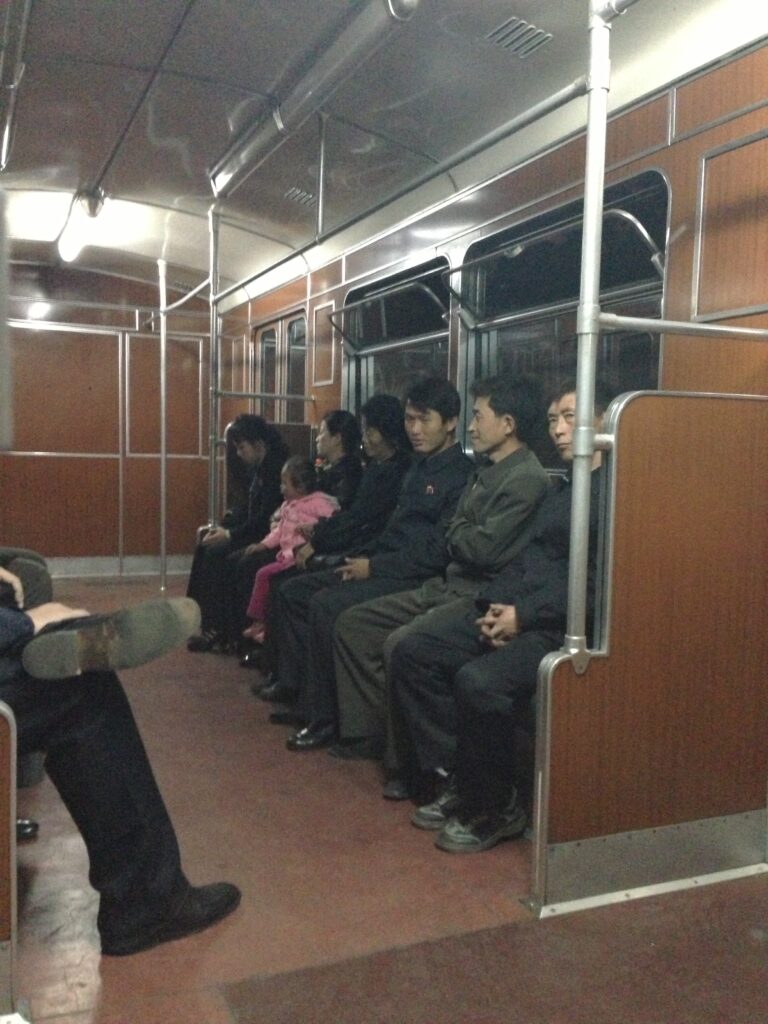
We got to see a few stations, including one's supposedly not seen by foreigners very often (unfortunately I couldn't find any photos I took myself of the stations).
The subway station only has two lines. This was also a great experience as we got to interact a bit with the locals on the train.
Kumsusan Palace of the Sun
Without a doubt, visiting the Kumsusan Palace of the Sun was one of the most bizarre experiences not just of my trip, but of my entire life.
Jews have the Western Wall, Muslims have Mecca and Medina, and North Koreans have the Kumsusan Palace of the Sun and, more specifically, the Mausoleums of Kim Il Sung and Kim Jong Il.
We were told that most likely, we would not be allowed to visit the inside of the Palace but low-and-behold when the day arrived, it turned out we could go in after all.
There aren't any amateur blogger photos or vlog footage from the inside of this building, as filming is strictly prohibited.
They make you empty all your pockets and confiscate all electronics, which are then returned to you later.
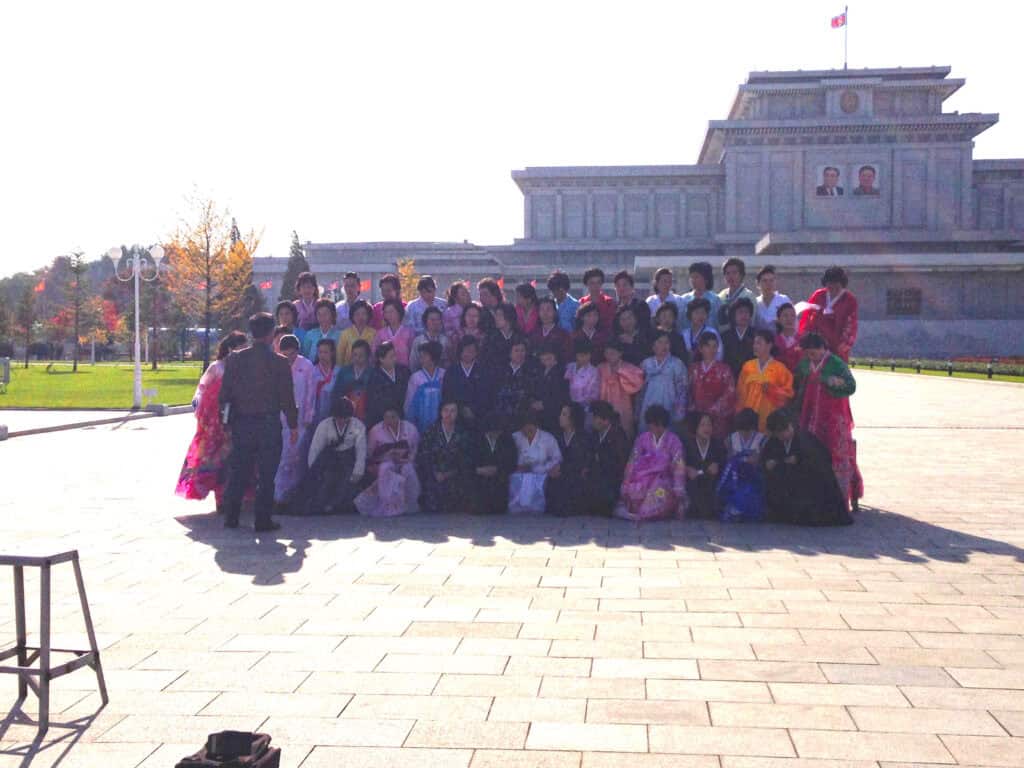
Mausoleum where Kim Jong Il rests in state
The tour starts with you being given the most serious security check of your life.
They're checking mainly for hidden cameras of any sort including in pens and eyeglasses.
All electronics are confiscated. You then are taken into a long moving walkway that goes on for about 15 minutes.
On each side are various paintings of the country's original leader Kim Il Sung doing various things, but almost always some form of providing field guidance at either a factory, a farm, or riding a horse in the wilderness.
Patriotic music is blasting through the loudspeakers. This goes on and on and on.
Eventually, you get off and are taken on another long people mover, which is essentially the same thing, but this time with Kim Jong Il.
This walkway is slightly shorter, about ten minutes or so.
At the very end of the walkway, they dedicated two or three portraits to the current leader Kim Jong Un.
(This was in 2013. I'm sure as of 2020, they probably added more.)
The Mausoleum – inconsolable crying North Korean women
After this, you are taken down some kind of opening in the wall with air blowers pushing air in all directions.
When you pop out, you'll see North Koreans, and especially women, hysterically crying.
Whether this is acting or not is anybody's guess, but it didn't seem like they were faking it to me.
I mean, the North Korean women near the mausoleum were crying there as if their child had died; it was a bizarre sight to see.
Then you are taken to Kim Il Sung's mausoleum. You must quickly pay your respects by bowing down.
You are then swiftly taken into the next room, which is Kim Jon Il's mausoleum, where you must bow down again.
Next, you're taken to a room that shows all the gifts, award medals, and plaques, as well as diplomatic “thank you” letters given by foreign governments and leaders.
90% were from European communist governments that no longer exist or dictators that were overthrown or died long ago, such as Indonesia's founder Sokharno and disgraced Romanian dictator Nicolae Ceausescu (a dictator who made Romania the spitting image of North Korea for 30 years).
Since North Korea's government has been a pariah for 30+ years now, they've had to get creative.
From 1995 onward, most of these “diplomatic gifts” are from organizations rather than governments, some of which may not even exist.
(I saw things like “The Juche Organization of South Australia,” etc.)
The most interesting part is at the end of the tour where you can see all the countries Kim Il Sung visited, along with his train car.
In the next room, you'll see all the countries Kim Il Sung visited, and his train car as well.
They preserved his train car perfectly, even leaving the Macbook Pro on display!
I wish I got pictures but didn't want to risk a death sentence. If you watch the last two minutes of this video, it gives you a decent idea of what I saw.
Other places we visited in DPRK
Getting out of Pyongyang is typically the highlight of your trip as you get to see some of the countryside on the bus ride.
And, more importantly, the propaganda is just a bit less intense outside of the city (though still substantial).

Kaesong city
Kaesong is a small and prosperous (by North Korean standards) city near the DMZ. Geographically, it is much closer to Seoul than Pyongyang.
Kaesong was famous for hosting an industrial park in collaboration with the South Korean government to produce goods, but it has long since been decommissioned.
The ancient city is very well preserved with tons of ruins and buildings.
Kaesong belonged to the South Koreans for most of the Korean War and was one of the few places in North Korea that weren't bombed.
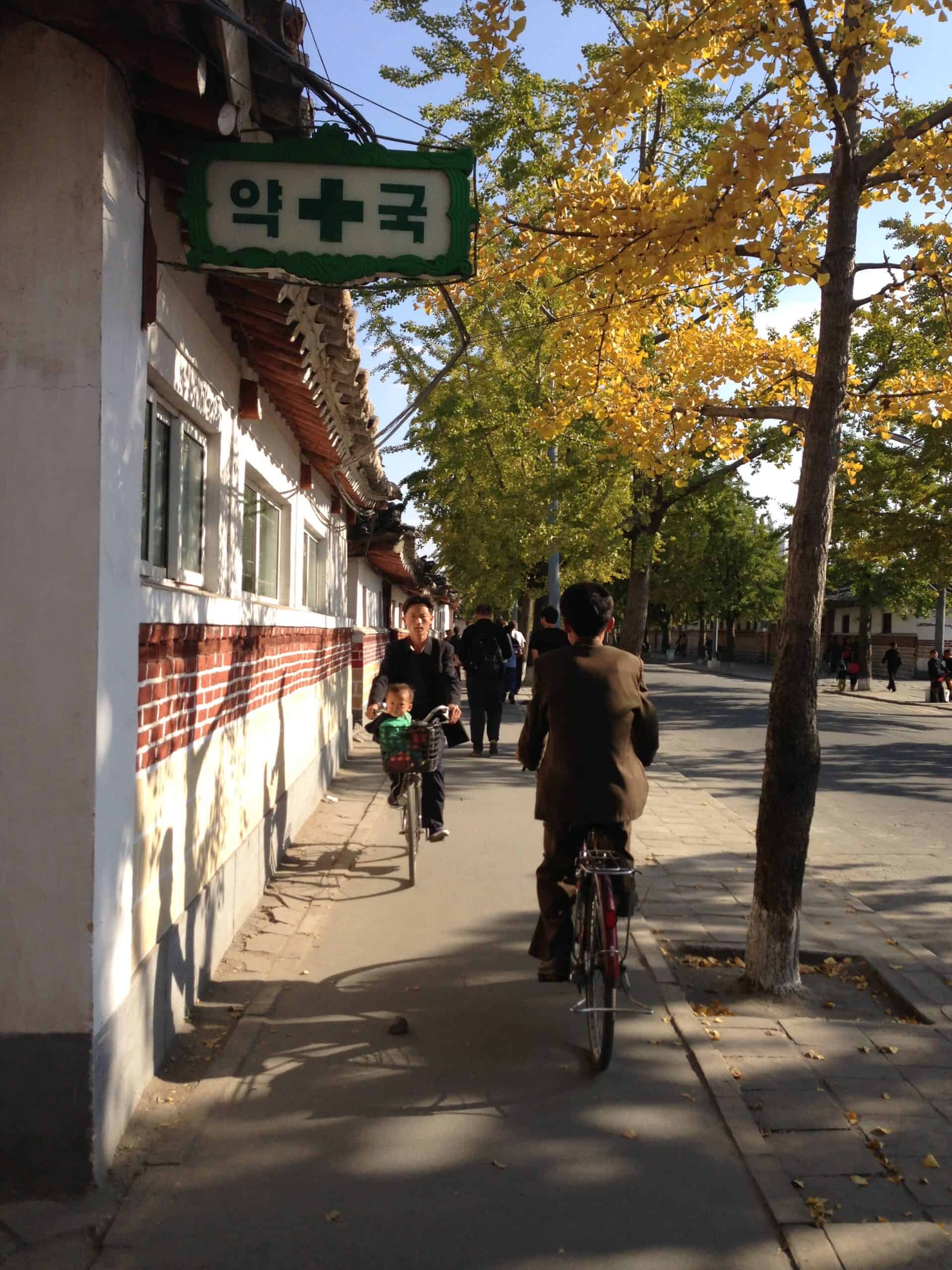
More importantly, this was the only time during the 6-day trip when we had a fair bit of freedom to walk around outside by ourselves.
It was a relief not to have three different local guides continually breathing down our neck.
A small group of us went to a nearby park and saw lots of people taking wedding photos, relaxing, and enjoying their day off (I believe we were there on the weekend).
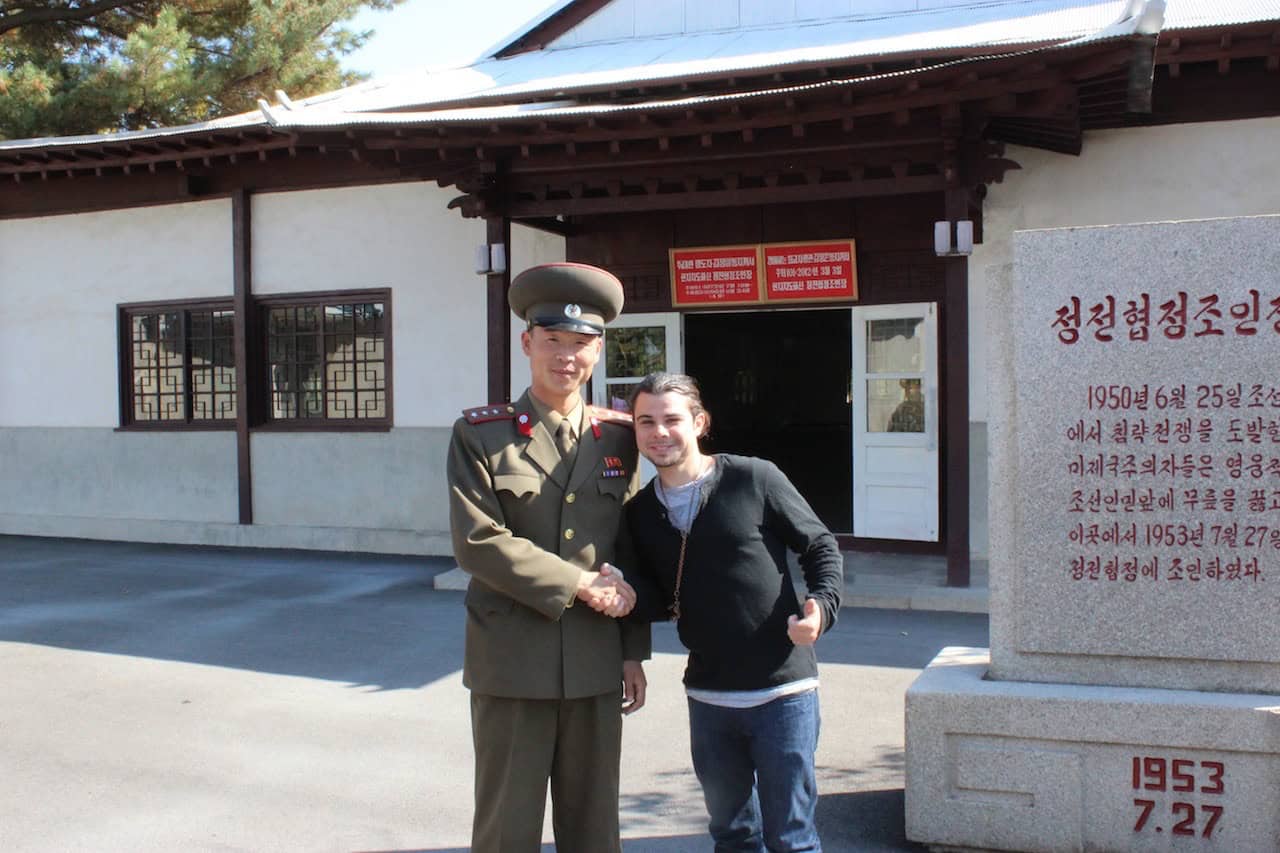
The DMZ from the North Korean Side
(Panmunjom Truce Village)
If you visit the DMZ (demilitarized zone), you’ll have far more freedom to walk around and take pictures on the North Korean side than the South Korean side.
Going to the Panmunjom from the north side was a much more pleasant experience than from the south.
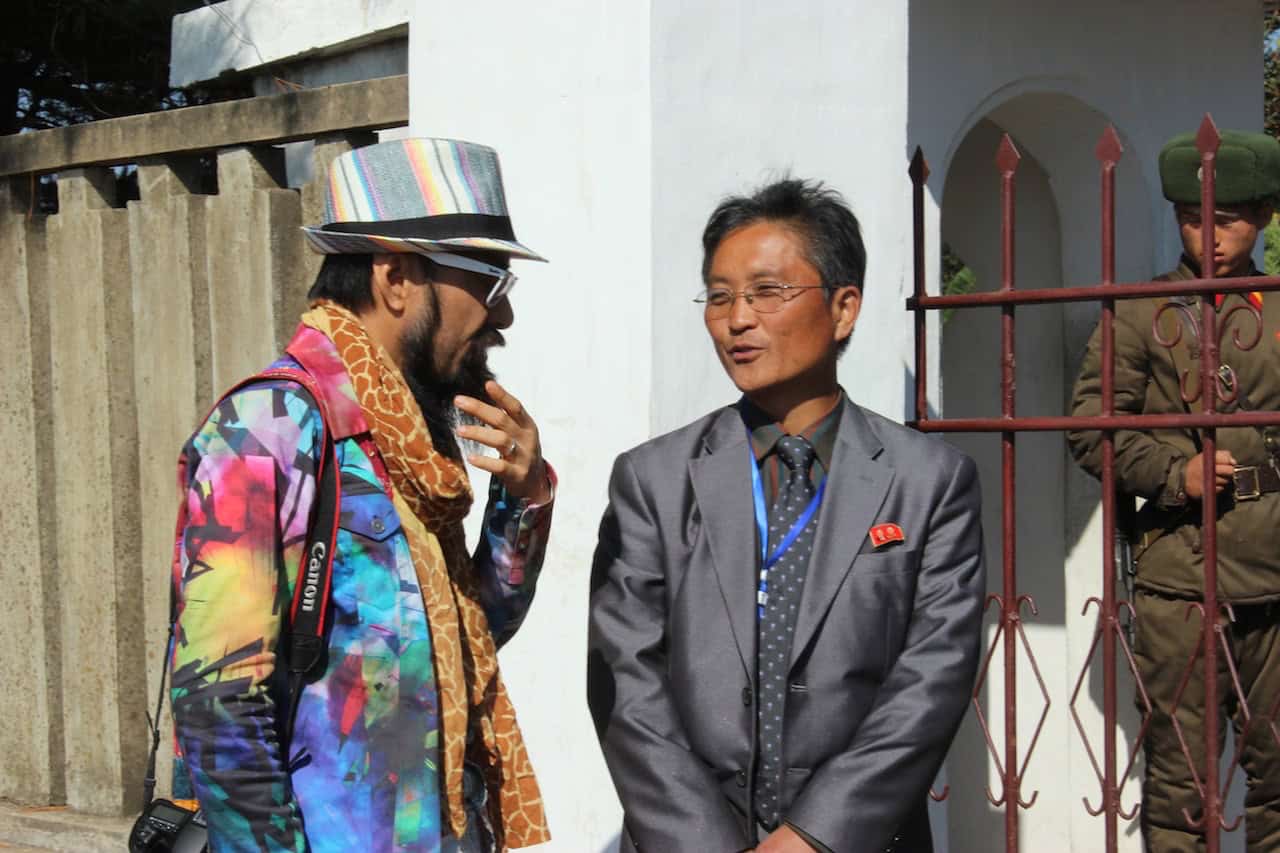
I also went to South Korea on this trip the following week.
When I visited the DMZ, they hardly let us take any pictures or talk to the soldiers; it was quite a disappointment.
This is pretty ironic because you'll be told that in North Korea everything is scripted, you'll have no freedom of movement. And this is mostly true.
However, if you are a history buff and want to explore the DMZ, you'll have more freedom to walk around if you go on the North Korean side.
(Just don't cross the line unless you want to get riddled in bullets!)

We were taken into a small room and given the North Korean version of events as it relates to the Korean War.
We were reminded that both Koreas, as well as the USA, are technically still at war.
And we were told about ten times that it was South Korea/”The American Imperialists” that started the war (fact check: virtually all historians agree that North Korea initiated hostilities, but again, who knows who's right).
We were also shown the official armistice agreement.
Technically the DMZ is the only place you are allowed to take a photo with a North Korean soldier.
The truth is, even though they tell you not to take pictures of soldiers, they are so ubiquitous in the country, it's almost impossible not to.
However, the DMZ is the only place you can interact with the soldiers and probably the only place with soldiers that speak a bit of English.
At the end of the tour, we got to wave to the tourists on the South Korean side, and they waved back.
When I later visited the South Korean side, I kept thinking how bizarre it is two such very different worlds exist right next to each other.
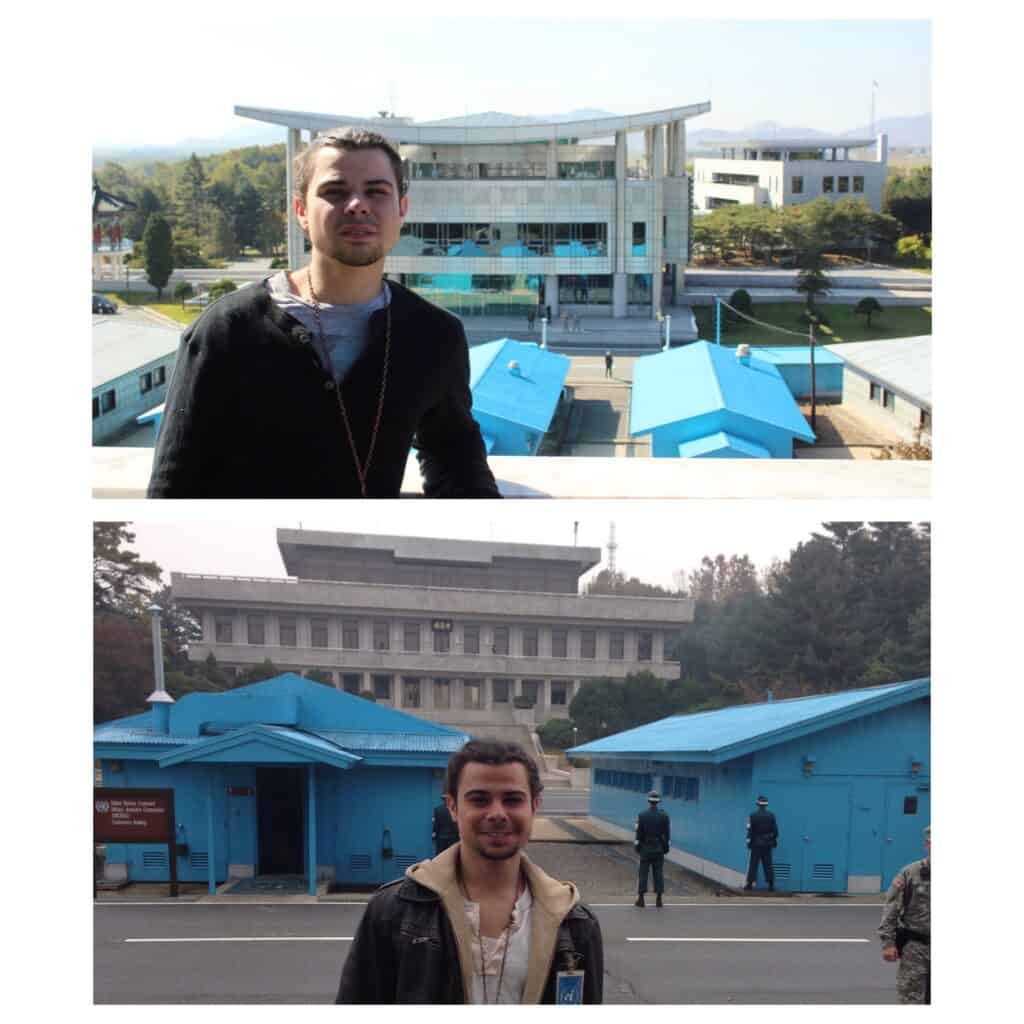
Bottom: One week later – DMZ from the South Korean side
Nampho (Nampo) City – North Korea
A unique stop on our North Korea tour was an industrial town on the west coast of Korea called Nampho (also spelled Nampo).
Tourists don't usually go here, which means we could see more real-life scenes and less “acting” and propaganda.

Taen Machine Factory – Nampho
This was my first time stepping into a machine factory and smelter in nearly 12 years.
The last time I had done so was in China when studying business abroad in 2008.
The factory didn't look too different from any other factory, except for the propaganda slogans on the walls everywhere.

Before we entered the factory, we were told how this all related to Kim Il Sung and how many times he had been there.
And we also were shown a mini-museum attached to the factory.
Not much else to say here. It was busy people working a smelter and making machines. The photos and videos were sick, though.
Chingsan Cooperative System Farm – Nampho
The first thing that struck me about this model “farm” is that very few people were there, even though it was harvest season!
Plus, there were no animals. We did see some people driving by.
Writing this seven years later, I still wonder if it was just a day off for the people working there?
It's tough to tell whether what you are shown is real, what is not, and what is real but exaggerated.
Adding to the Orwellian atmosphere, there was some propaganda blasting from speakers throughout the pasture, but the audio recording kept breaking and glitching.
We were allowed to roam around the farm for a little bit.

Perhaps, like the hospital visit, the farm is indeed real but this a “model” version made for tourists that is still partially used in real life.
2020 Update: It seems many tourists go to this specific farm and orphanage, so this would add evidence to the theory that it's not just “any other regular farm.”
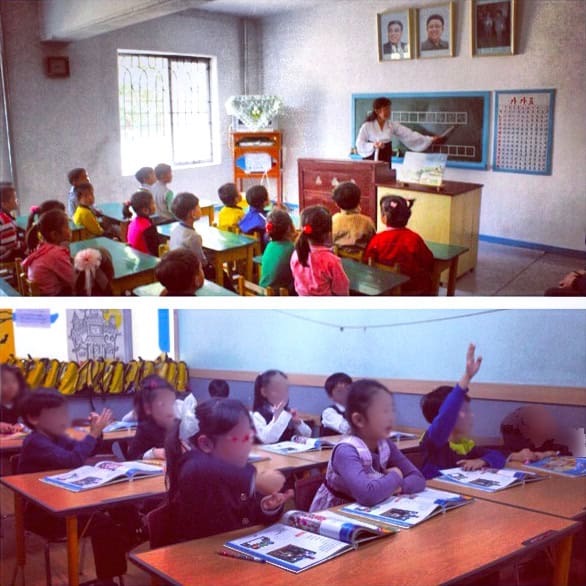
Bottom: South Korean kindergarten (Seoul, ROK)
Rural North Korean kindergarten “orphanage”
Following the farm, we were then taken to a North Korean kindergarten.
Was it real or not? Again impossible to say, but I'd lean on the “yes it was real but probably in better condition than most rural kindergartens.”
The first thing you notice when walking inside is a giant painting of Kim Jong Il sitting with a bunch of young children.
Then as you walk in, you see a lot of propaganda posters everywhere, all of which are some variation of “kill the Japanese” or “kill the Americans.”
You could tell the teacher was embarrassed that we were taking photos of this.
Also, we were told this was an orphanage, but interestingly enough it wasn't that they didn't have parents, they just went to school and lived there.
I guess it'd be considered more of a “boarding school for kindergarten-aged children.”
After this, we went inside a classroom.
The children performed some songs on the piano and simple dance routines clapping their hands; we were invited to join.
The kids were lovely and it was a highlight of the tour.
What was the food and drink like?
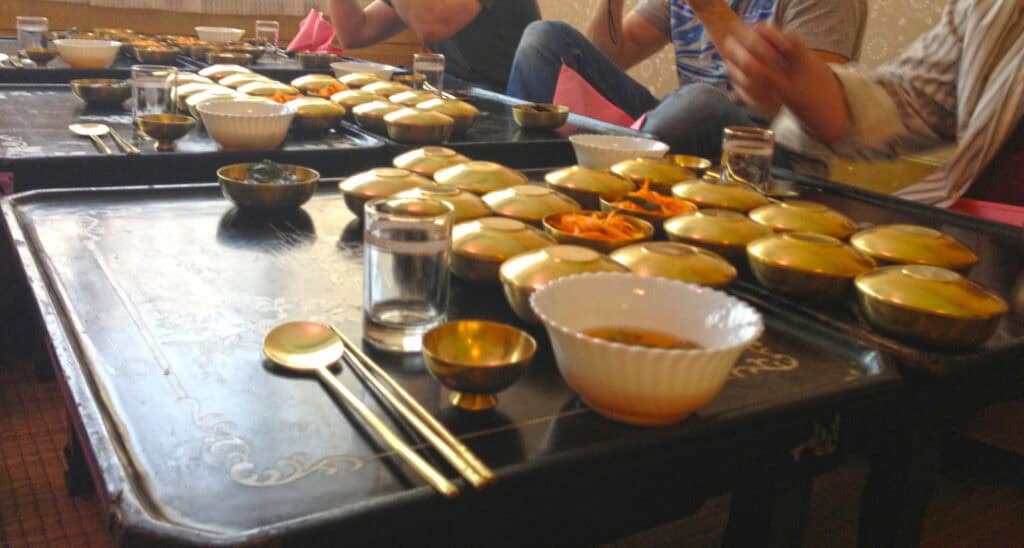
They fattened us up real good in North Korea.
I think it's their part to “show us” how much food they have in North Korea since the country gets so much bad press that their people are ostensibly malnourished.
I will tell you for a country that supposedly has no food I have never seen so much farmland in my life. It seems the whole country is one giant farm.
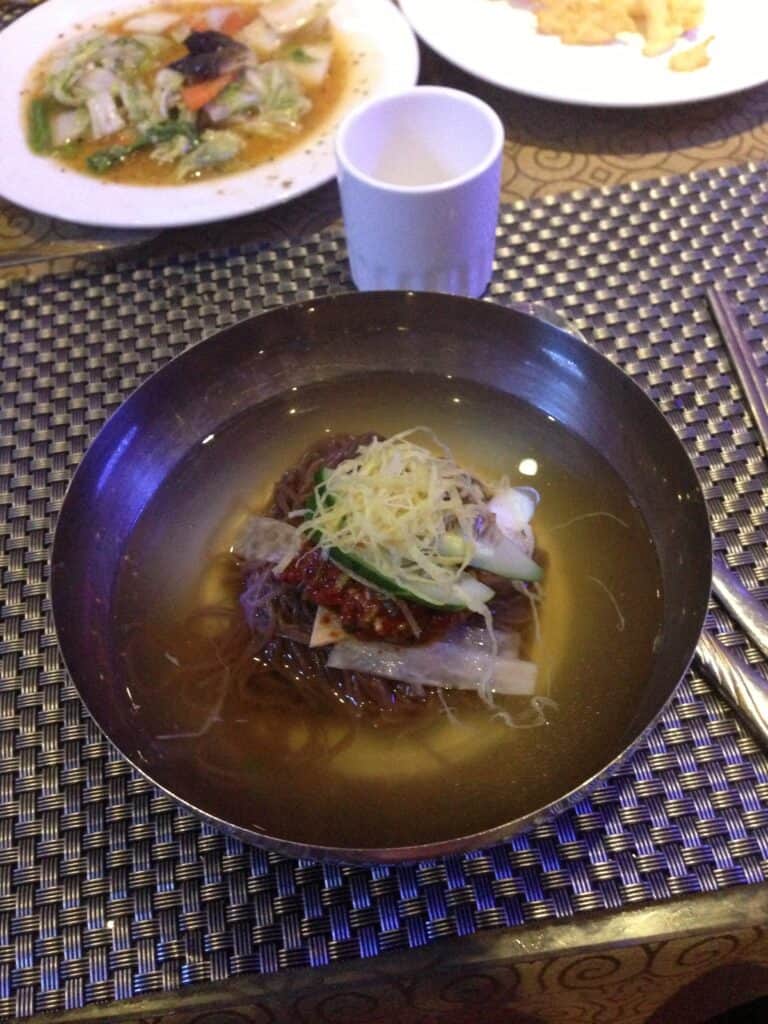
North Korean food, at least the way we had it presented to us, is very similar to South Korean food but without the western influences.
The most popular dish is “Pyongyang Cold Noodles,” which is Korea's take on Ramen noodles. It's a bit of a misnomer as the broth is served hot.
You can get it in any Korean restaurant. I've even ordered it here in Mexico where I live. I'm not a huge fan, but some people love it.
People also eat massive amounts of kimchi, which is also true in South Korea.
The country's beer is all brewed by the Taedonggang beer company. It's a delicious lager but tastes very ale-like, like a lighter pale ale.
Also, many places seem to have their own brewery that produces delicious lager, which I presume is also Taedonggang beer.
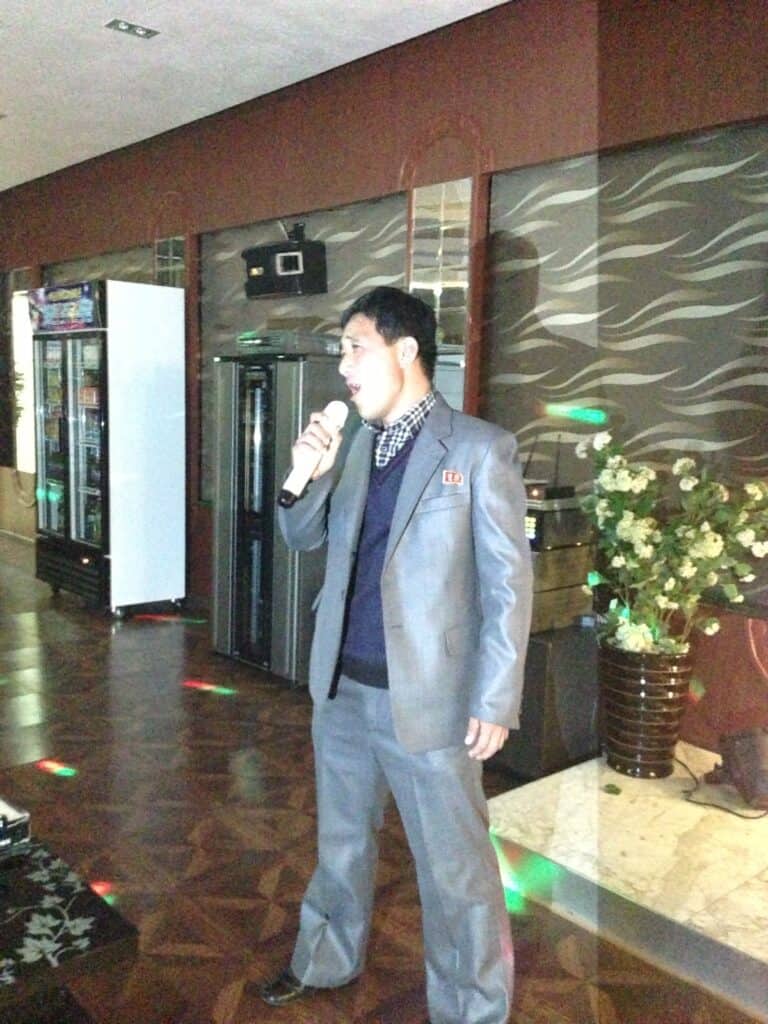
Partying in North Korea?
Partying options are limited to your hotel, and this one fancy place called the “Diplomatic Club” that is made for foreigners and diplomats and their families.
Unfortunately, the guides aren’t (yet) able to take us to where real North Koreans go out and have a good time.
After 12 hours straight of sightseeing and a round or two of bowling at the Yankhado bowling alley, you won’t have much energy left to go out and party anyways.
Can you go to the North Korean border with China?
After the end of my DPRK tour, I decided to visit the borderland region in China in Dandong in Liaoning province.
As of 2020, the Chinese government has cracked down, and they do not like people flying to Dandong just to screw around near the border.
However, when I went in 2013, things were still pretty relaxed.
The border has a lot of fascinating history as it marks the end of the Great Wall of China, and the wall still serves as the approximate border between Korea and China.
A lot of smuggling and things go on in the border cities of Dandong and Sinuiju.
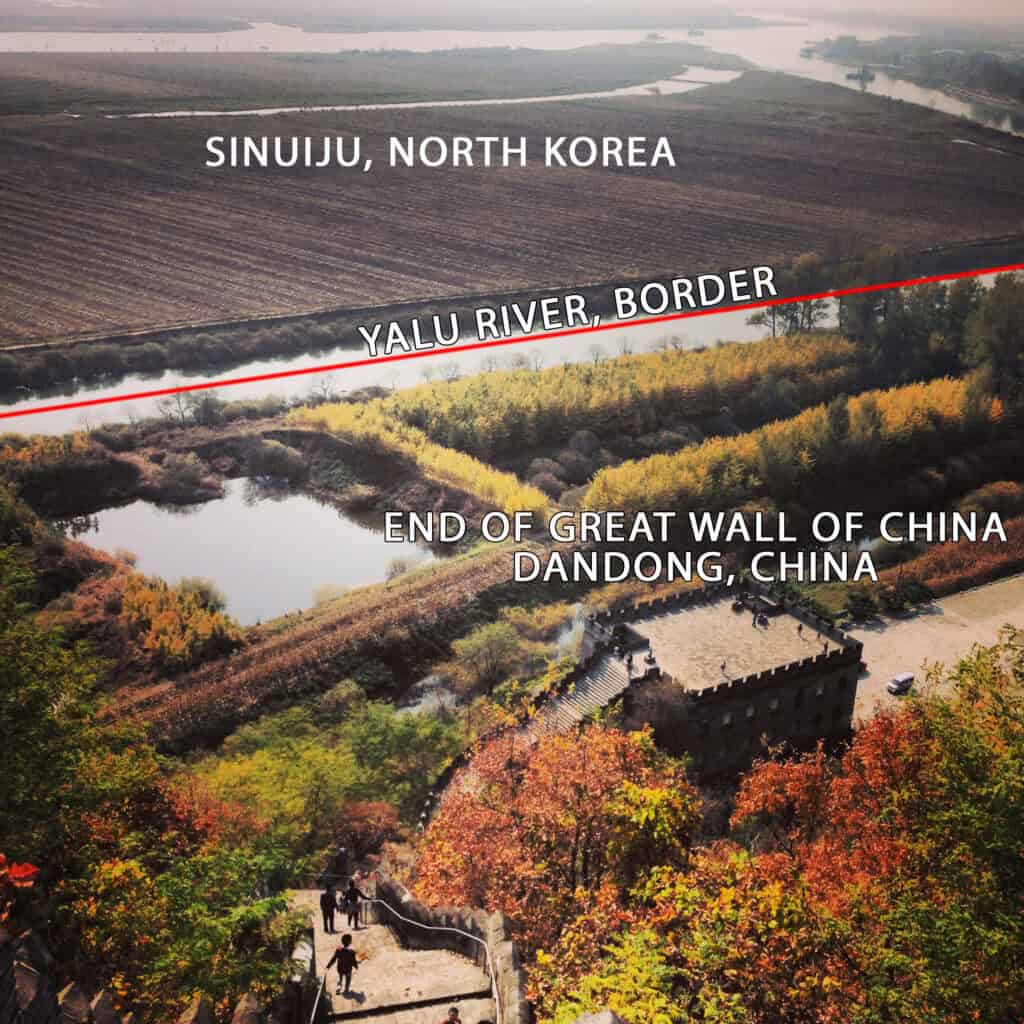
You can get close to the border, ostensibly to enjoy the Great Wall of China, but the real reason is to get a good vantage point to see North Korea over the border.
Here a few more photos of my time in Dandong.
I had a great Chinese guide who had, let us say, a “less than favorable” opinion on North Korea, which was a great counterbalance after hearing five days of propaganda.
I managed to get right up to the river and border before I got yelled at by some guards, and my Chinese tour guide quickly whisked me away.
Later, the guard said the reason they were yelling at me is that they found a dead body in the river earlier that day. Yikes!
2020 Update: Apparently, Chinese authorities got fed up with curious westerners getting dangerously close to the border in Dandong, so if you go, just be careful and always go with a guide as I did.

Dandong to Incheon, South Korea by ferry
I won't cover South Korea since there are already so many articles and videos on it, but it is a lovely country.
The boat ride was interesting in-and-of-itself.
And before you ask, I highly doubt North Korean refugees would be able to make it onto the ship as they checked everyone's papers pretty thoroughly on the Chinese side.
The ferry was packed to the brim with Chinese laborers trying to get back to Seoul, where they live and work.
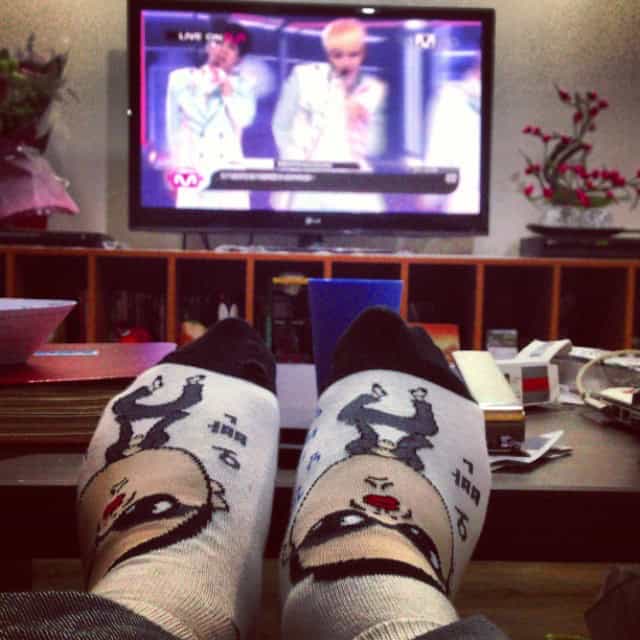
Some of them spoke a few words of broken English. I shared a room with three Chinese laborers.
We exchanged food, and they taught me a card game using just charades and hand gestures until I got the hang of it.
After a few beers, it seemed our communication improved a lot!
It's hard to believe I crammed so much adventure in just a little over one week.
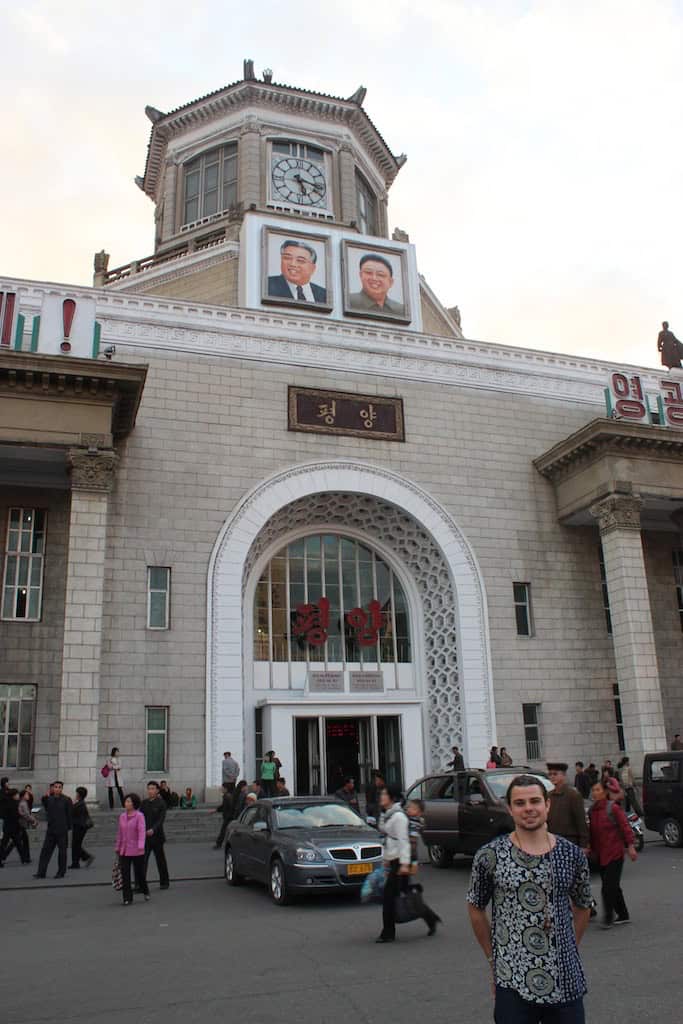
How much freedom do you have on a DPRK tour?
It depends, but generally speaking, you have very little freedom.
Nevertheless, you do get to walk around on certain streets for 15-20 minutes on your own sometimes, but you're asked not to go inside any buildings.
One time I snuck into what I believe was a mundane flower shop, and my guides immediately freaked out and pulled me back into the group.
You might “feel” like in some places you're given a little space, but in reality, you're probably being watched by at least one person, if not more.
One instance that surprised me was in the city of Kaesong, where we were basically in the city center and had about 30-45 minutes to walk around and do whatever we want.
This was the only time I ever remember being outside in smaller groups without minders breathing down our neck, BUT as I previously said, it only felt that way.
Did you get a chance to talk and interact with any locals besides your guides?
Unfortunately, since I don’t speak Korean, I didn’t have a chance to have a real conversation with anyone other than my guide, but we had plenty of moments with locals.
Not a lot of people spoke English, but we exchange plenty of hellos and small moments with people in Pyongyang and Kaesong.

There is a “rumor” or “perception” that all interactions with locals are set up and that they're not allowed to speak to foreigners. This isn’t true at all.
We shared moments with them on the subway, and laughed and screamed together with DPRK soldiers on roller coaster rides at an amusement park in Pyongyang.
Of course, being a group of rambunctious guys, we did everything we could to distract the beautiful local traffic ladies and make them laugh as we passed by with varying levels of success.
We had plenty of smiling faces wave hello to us as we passed by.
Then again, the language barrier presented a considerable challenge, and even if we could speak Korean, most topics you'd be interested in asking a North Korean would be off-limits anyways.
If you want to meet “real” North Koreans and get their opinions on the country, you're probably better off arranging a tour of the North Korean neighborhood in Beijing with a Chinese guide that has connections.
If you're in Beijing or Dandong, it's relatively easy to arrange such a tour, but when you're actually INSIDE the DPRK, it's not the right place to ask these types of questions.
You can get everyone in trouble, including your guide, the western guides, and, most importantly, yourself.
Was everything you saw fake in North Korea?
If the government indeed setup every “moment,” they must have had to hire tens of thousands of people to be at the exact right place at the exact right time–possible, but highly unlikely.
I doubt anyone on our tour was important enough to be worth the time to do that.
Are a lot of the places you go to complete farces, setups, or just 100% propaganda?
I’d say for the most part we went to real restaurants, real sites, a real amusement park, actual ancient ruins, and a genuine steel factory.
We went to the DMZ, and I’m pretty sure the hotel was, in fact, authentic and not a mirage.
I’m also pretty sure our guides were real North Koreans (albeit part of the privileged 1% with access to hard currency).
Some places felt real but very exaggerated, like the Pyongyang Maternity Hospital.
Other sites were real such as the factory we visited and walking around town in Kaesong.
Again, when you're going on a guided tour of North Korea, it's tough to say what's real and what's not.
Still, I'd say most of what you see is not fake, but rather exemplary schools, top hospitals, and facilities, etc.
They're probably not in line with what the average North Korean experiences at a minimum.
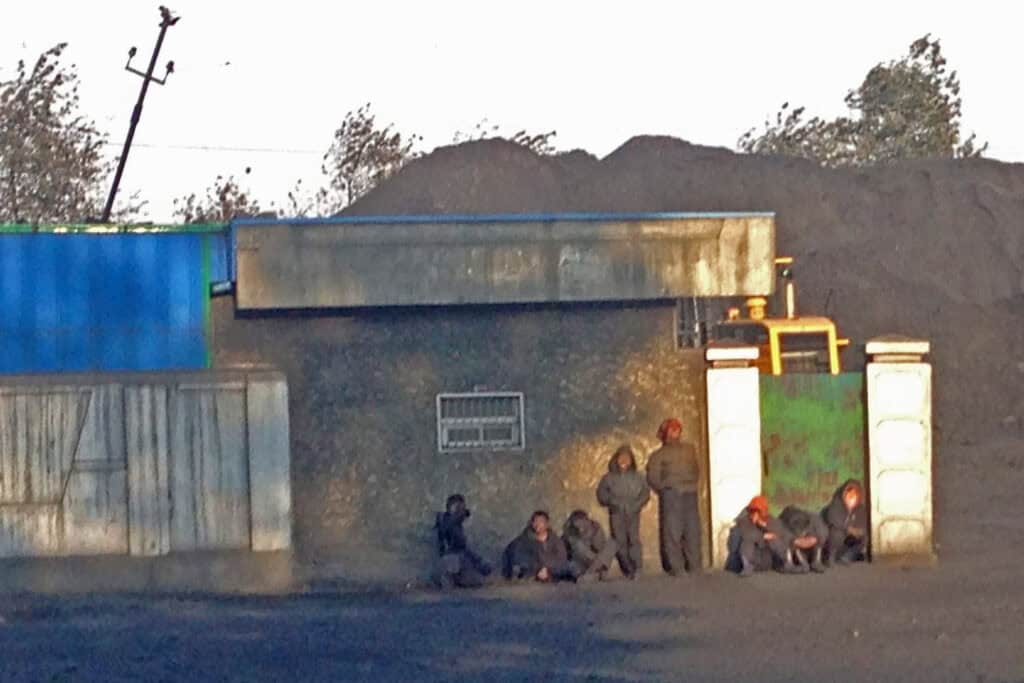
So, in summary, you will be taken to mostly real places and real sites.
When you eat, you will probably be surrounded by locals in some of the restaurants.
However, you will still get a pretty hefty dose of “Kim” propaganda no matter where you go.
There isn’t anything your foreign guides can do about this; it’s just how they roll in the DPRK.
What about conversations with your guides?
The only locals that spoke enough English to have a conversation with were our guides.
The two sensitive subjects we were told to avoid beforehand were the labor camps and defectors.
Other than that, the guides would talk to us about anything we wanted, including sensitive topics like the famine in North Korea in the 1990s, the split of the two Koreas, and their day-to-day experiences living in Pyongyang.
Some of the responses they gave us were the “correct” propaganda answers.
But often, they were a lot franker with us and more honest with their day-to-day life than what you might expect.
If you go, there's a good chance the local guides won't be as robotic and as you might expect.
If you're respectful throughout the tour, they'll loosen up a bit.
Also, your guides will know way more about the outside world than you might expect, but this could be because the guides have so much contact with foreigners.
One example of a positive effect North Korean tourism has on the country, is that no matter how much they try to isolate you from people, interactions and conversations are inevitable.
You could get the guides to open up quite a bit about their lives. (as long as you avoided forcing them to talk about the two hot button topics mentioned above.
NOTE: If you go to the DPRK, don't be a jerk and force your guides to answer questions that might get them (and you) in trouble. Trust me. They already know about the internet. And they're very well aware the entire outside world sees the Kim family propaganda system as a “cult.” You won't be telling them anything they haven't heard and will be getting them and yourself in trouble.
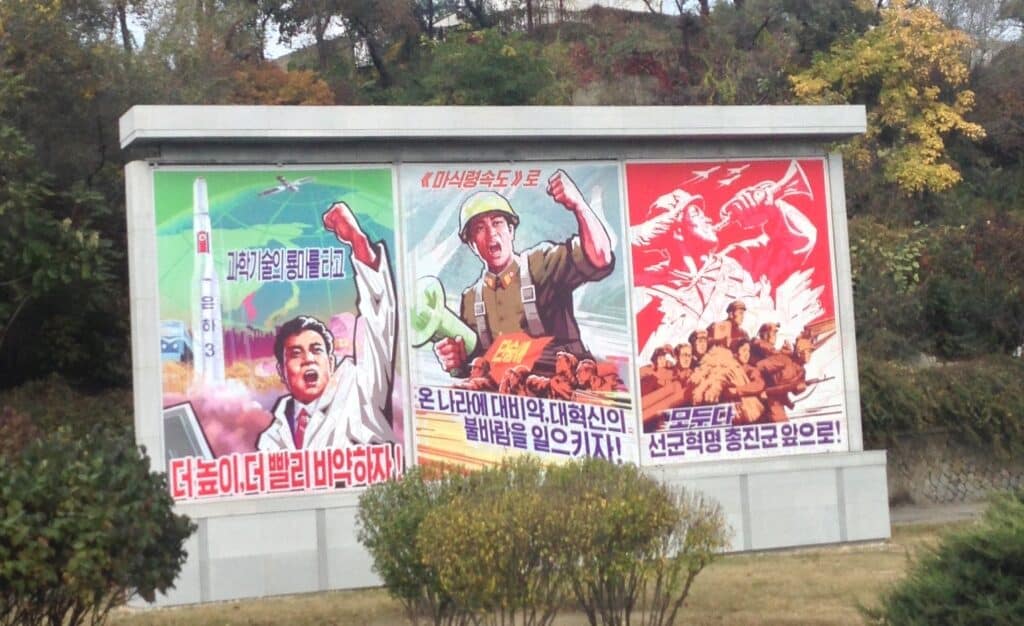
What’s the deal with North Korean propaganda?
The question people always want to know is whether North Koreans believe the propaganda.
My answer is I really couldn't tell you from a five-day tour.
Certainly, the people we encountered seemed very happy with the short and superficial brush-in's we had.
I think many of them are true believers, and many of them are not, but virtually every site you see and everything you do will have something to do with them.
It's creepy but honestly no more disturbing than any other state-sponsored religion or religion in general.
The people of North Korea need something to believe in, and the government gave them something.
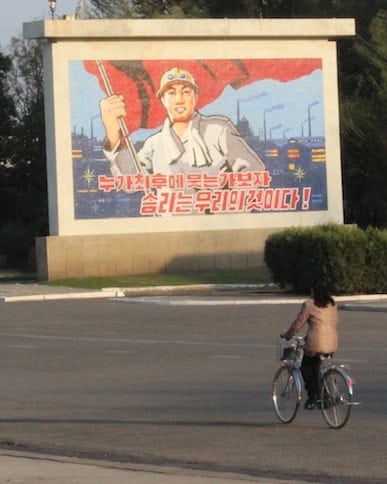
And the Posters and Speakers?
First of all, there is a giant bronze monument in the center of nearly every town of Kim Il Sung.
While I have my doubts that the people genuinely love Kim Jong Il, I have no doubt after talking to North Koreans and reading about Kim Il Sung that they hold him in high regard and aren’t “forced” to respect and revere this man as some may suspect.
There is quite a bit of propaganda everywhere but not nearly as much as you expect.
Since North Korea is so well known for its propaganda posters, everyone tries to snatch as many photos of them as possible.
I’ll put it like this. Those propaganda posters were rare enough that whenever anybody saw one when we were walking or on the bus, everyone would freak out and run to the posters.
Much more frequent then posters were slogans written in Korean. Who knows maybe the slogans are cheaper than the posters.
What about anti-USA billboards and propaganda?
In my entire time there, I only saw two billboards that specifically mentioned the USA.
Unfortunately, that billboard was in a school which shook me up.
I’m sure it affects them to an extent, but I’m sure a lot of them have formed their own opinions.
Either way, despite the propaganda, most North Koreans aren’t the brainwashed fools that many believe, and I think many of them know quite a bit more about the outside world than we may suspect.
However, for the 15% of North Koreans who get to live in Pyongyang and Kaesong who have free housing, food, healthcare, clean air, a ridiculous amount of green space, and near-zero unemployment, I can’t imagine they are asking too many questions.
For the rest of North Korea, I have no idea what is going on, but I imagine conditions are far worse.
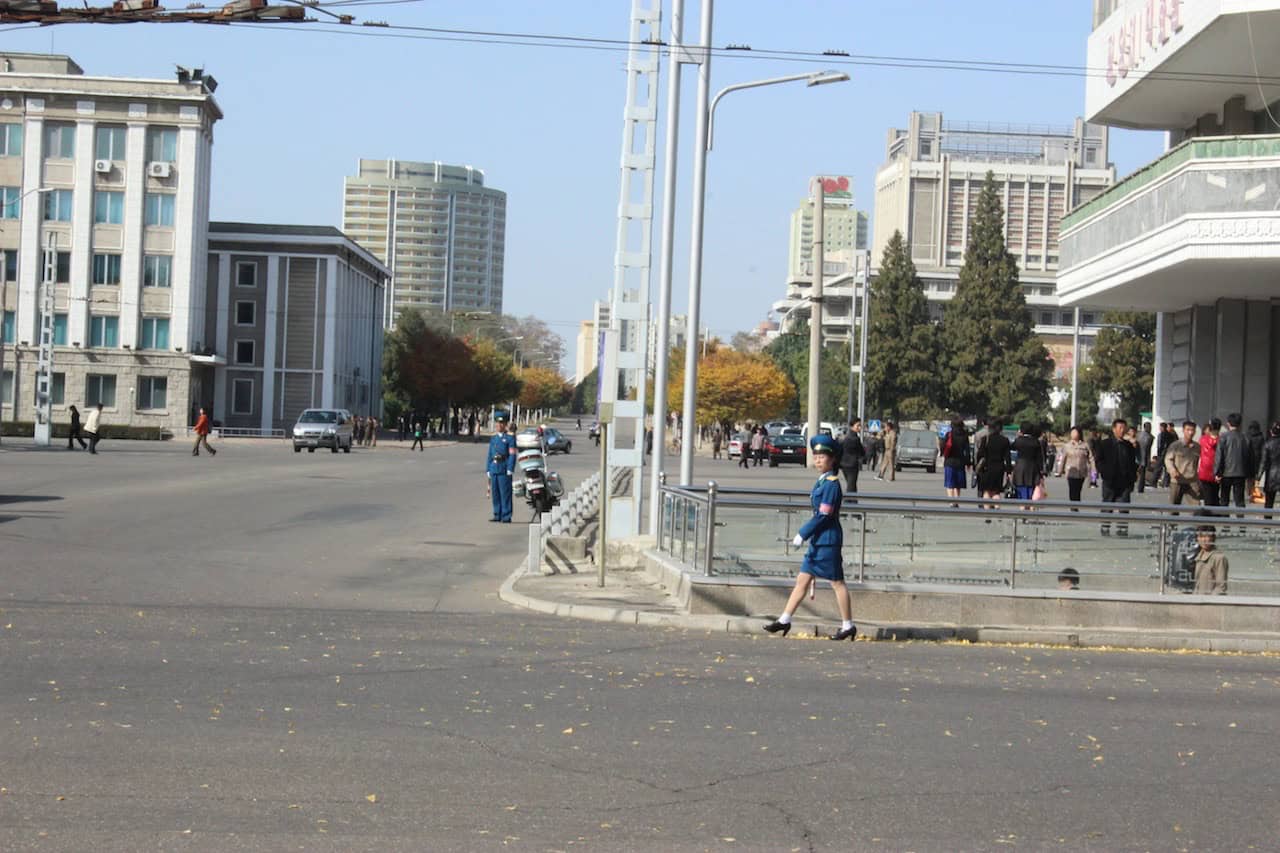
How much does a North Korea tour cost?
If you go with any tour company other than Young Pioneer Tours, chances are you will be with a much older crowd.
The general profile of the North Korean tourist is retired males in their 50s and 60s traveling the world and wanting to relive and recreate their younger days of being a western tourist behind the iron curtain.
However, Young Pioneer Tours brings a much younger, and frankly wilder group, which made the trip a lot more fun.
I felt bad for our female DPRK (North Korean) tour guide for having to put up with a bunch of boisterous young men traveling the country by bus with her for six full days.
Young Pioneer Tours has by far the lowest price of any tour company that goes to North Korea.
My 5-day tour was just €900 ($1,075), while Koryo tours would charge about triple that amount.
Compare that to five years ago, where a 5-day tour would cost $4,000+.
To get such a low price, they cut a few corners, such as having shared accommodation, but that didn’t bother me at all.
Is North Korea safe to visit, and would you recommend going?
What about all the messed up stuff that's supposedly happening in the country, you may ask?
I can't confirm any facts about North Koreans' day to day life and any restrictions they have on their freedoms based on a five day, highly choreographed tour when I don't even speak Korean.
I don't feel there is any point in me talking about these things because virtually every article I've ever read already points these things out, so I wanted to talk about the Korean people living in the DPRK and the experiences I had.
Not to mention they worked hard on this highly choreographed tour to not let us see any poverty, but when we were on the road, we most certainly noticed it.
Visiting the country is certainly morally ambiguous I will admit that, and I probably won't go back (and cannot go back anyways since Americans are now prohibited from going).
I feel tourism is improving the country's situation, improving the way we see North Koreans, improving the way they see westerners, and improving the economic and political situation.
If you want to go, I wouldn't lose any sleep over it.
Once again, as of 2017, Americans can no longer visit. For people eligible for ESTA visa waivers to go to the United States, remember you will no longer qualify for a visa waiver if you go to the DPRK.
If you ever decide to get residency or a job in South Korea, having visited the DPRK could cause you problems as well.
If you don't have plans to visit the USA anytime soon, then go for it, it's safe!
About the Author
Freddy Lansky is a former backpacker turned luxury traveler that currently runs a points and travel hacking blog called Points Panda.
You can follow his adventures on Instagram @PointsPanda
COPYRIGHT DISCLAIMER: The copyrights to this article and all of the media in this article (including the photos) are owned by the author, Freddy Lansky, who took the photos. For permission to use any of the media in this article, please contact him first.
Planning a trip? Go Backpacking recommends:
- G Adventures for small group tours.
- Hostelworld for booking hostels.

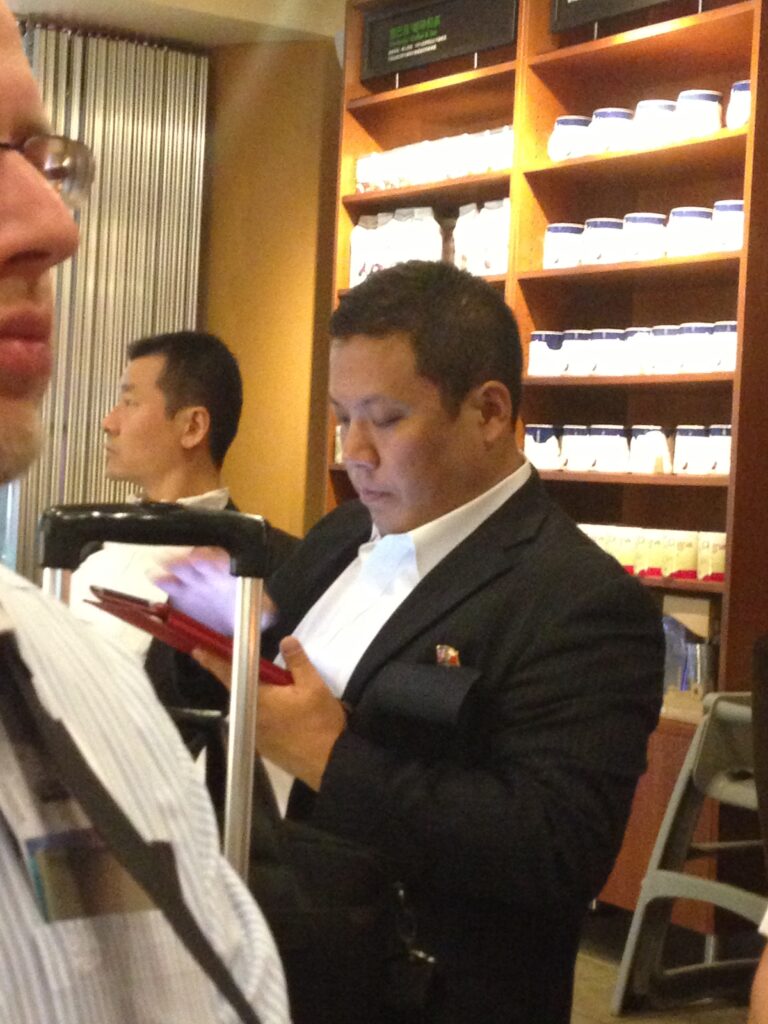
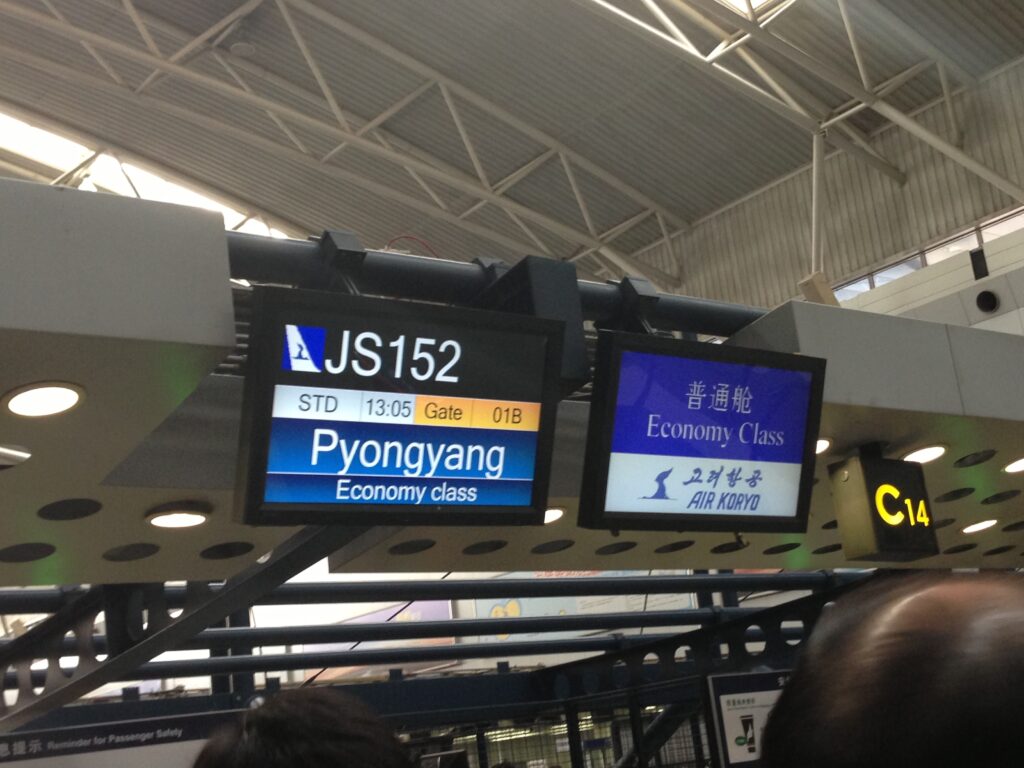

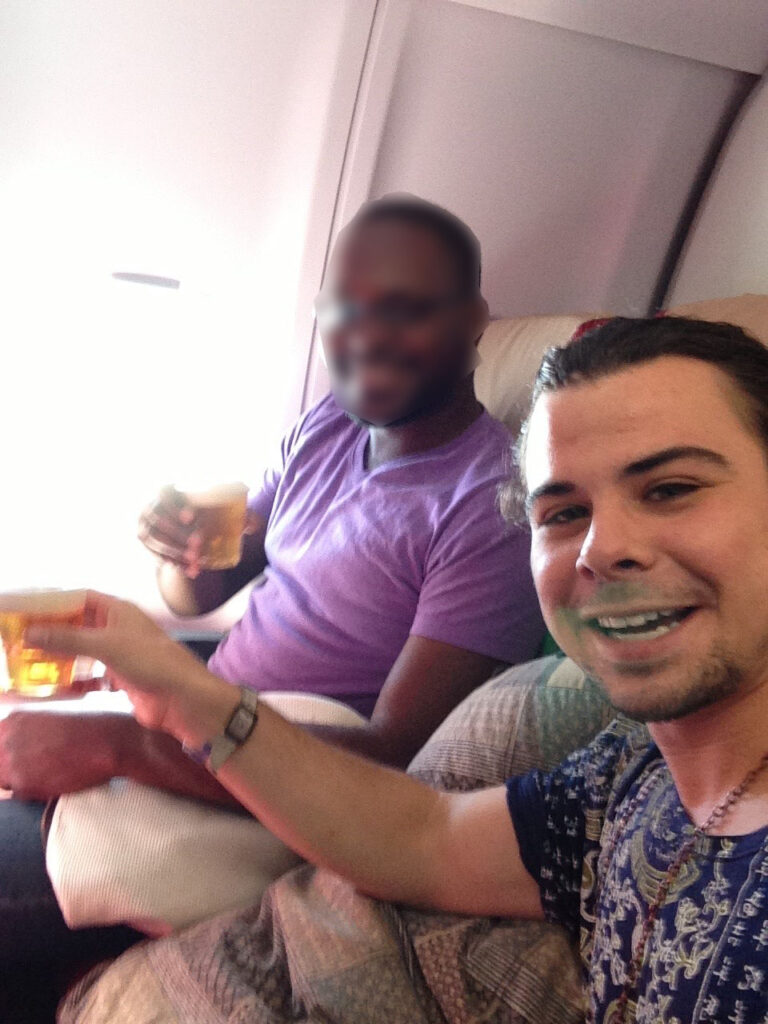
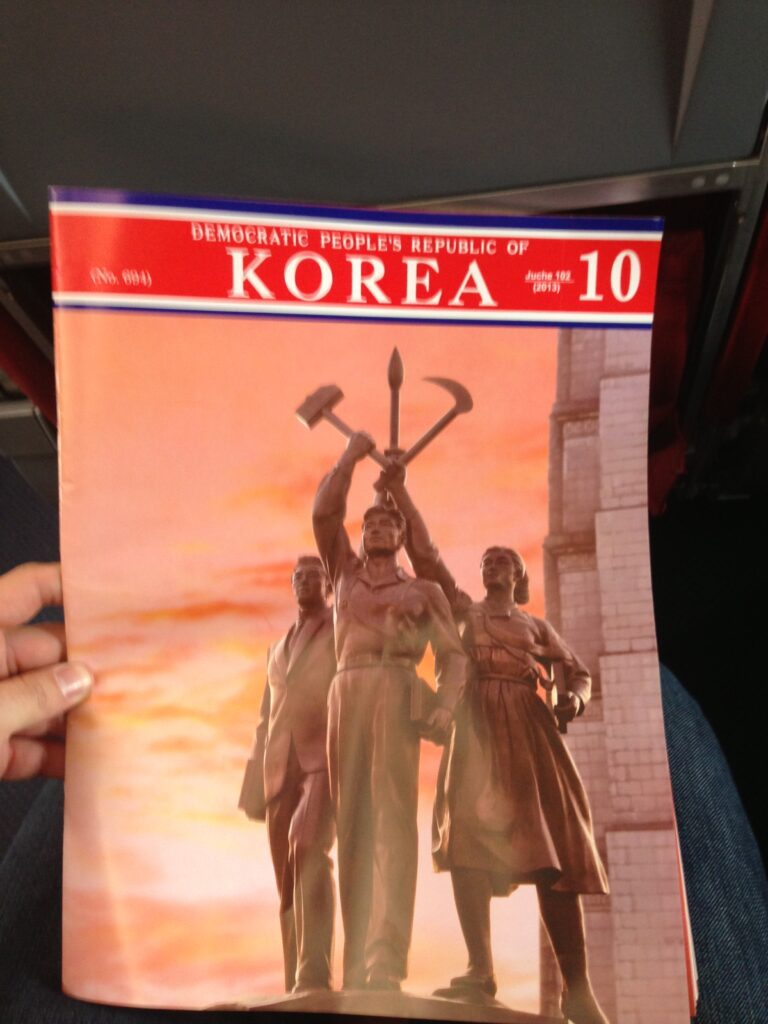

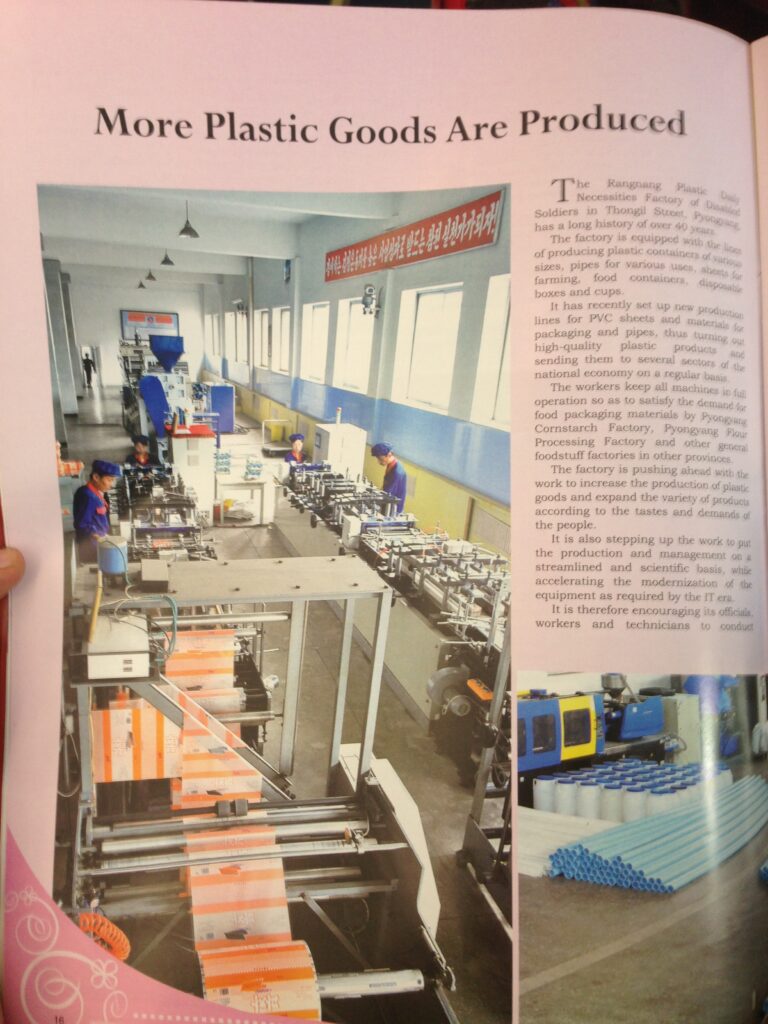

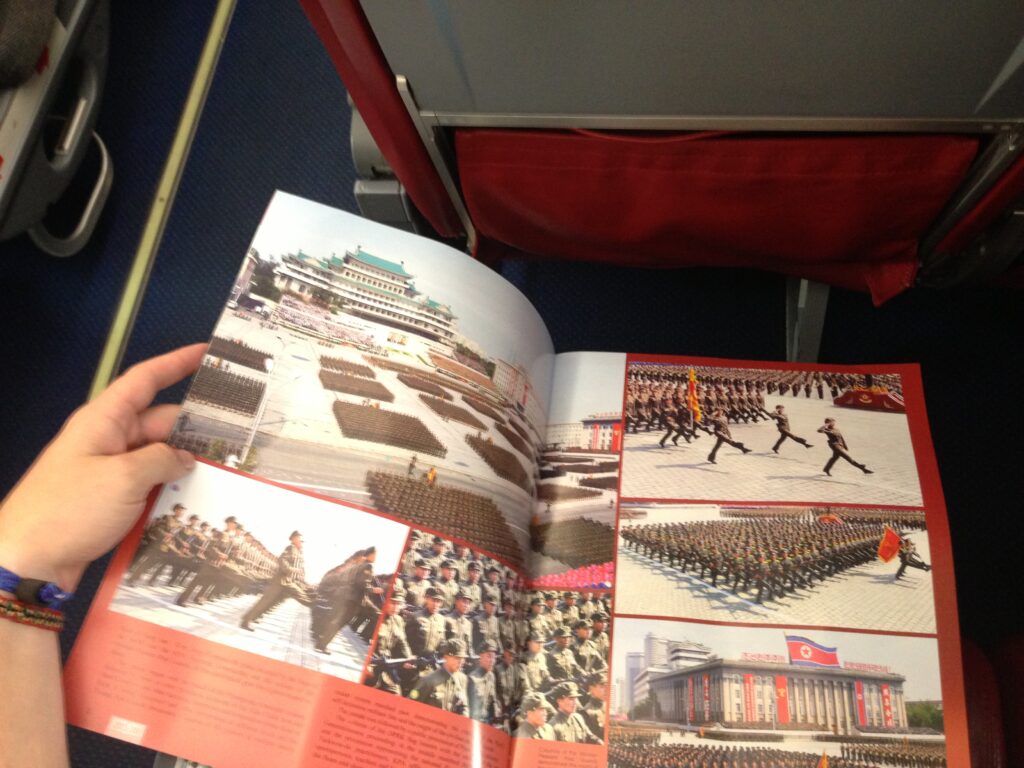


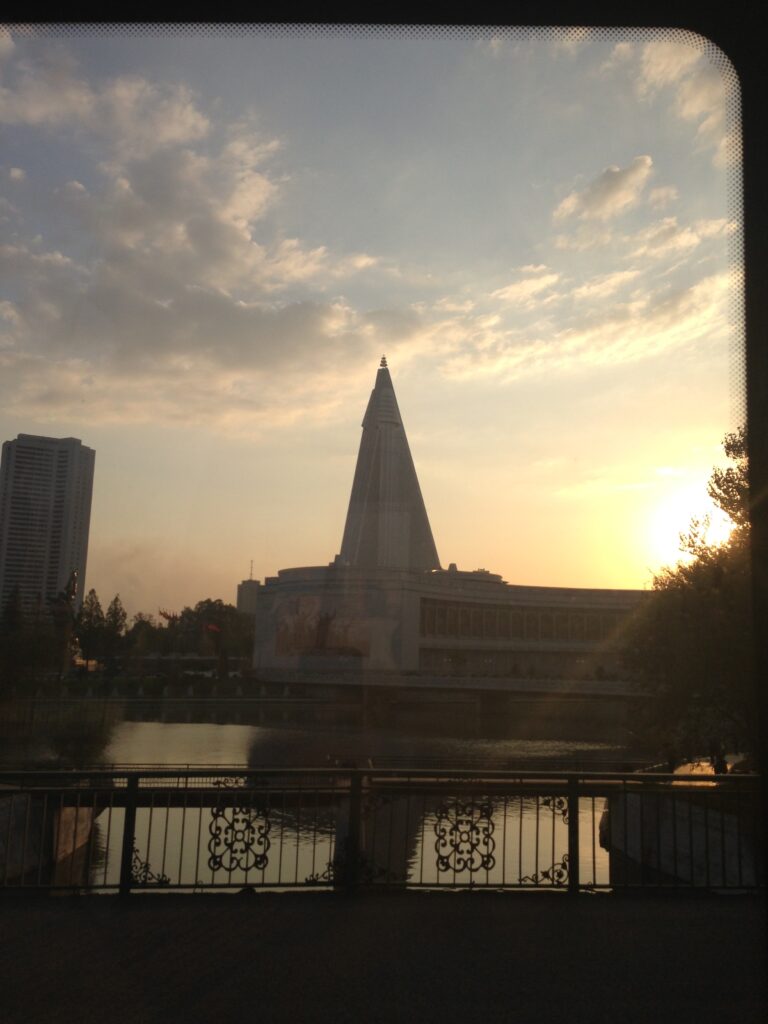


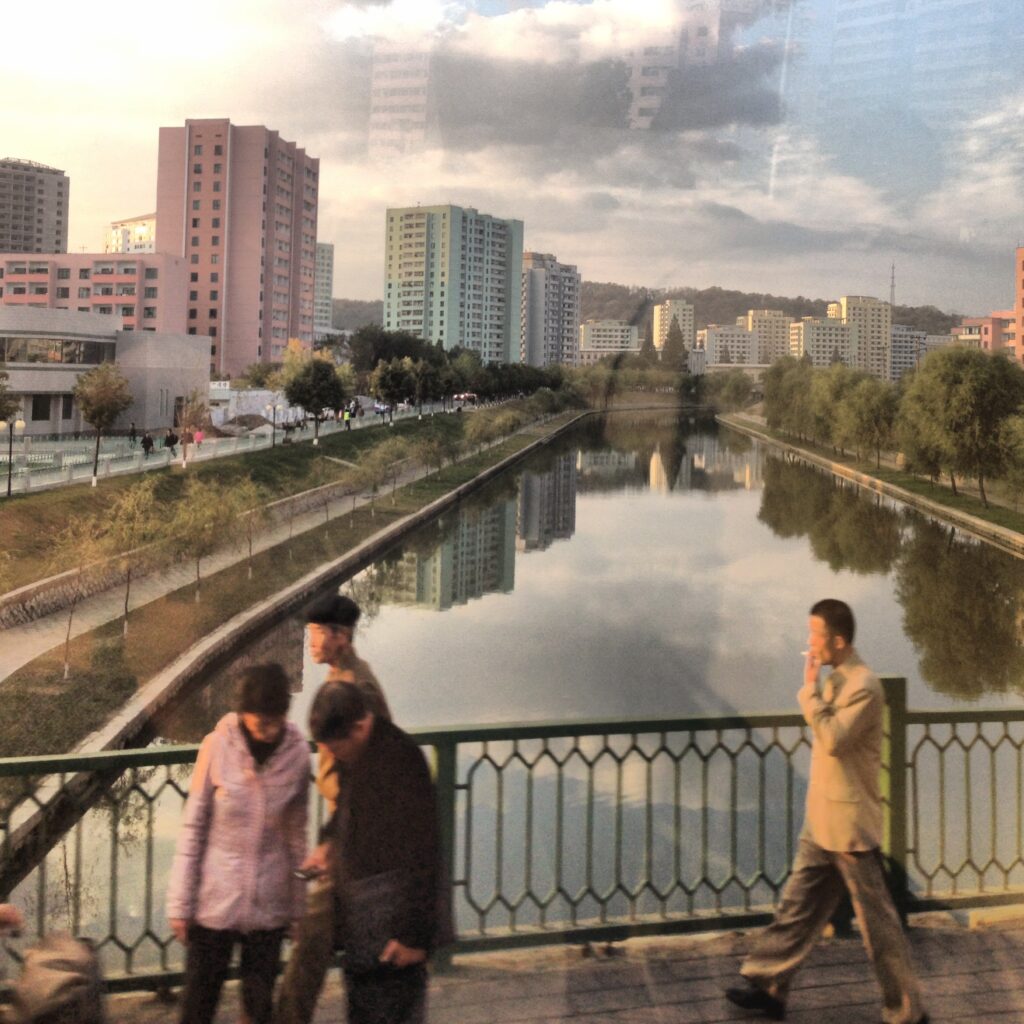








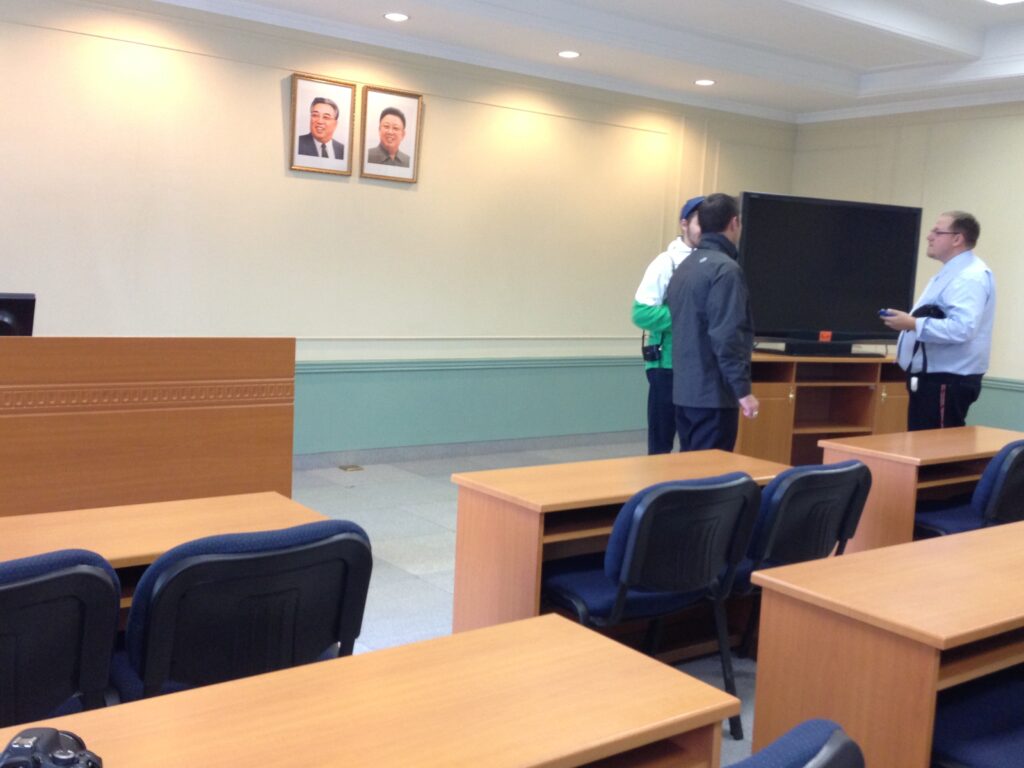
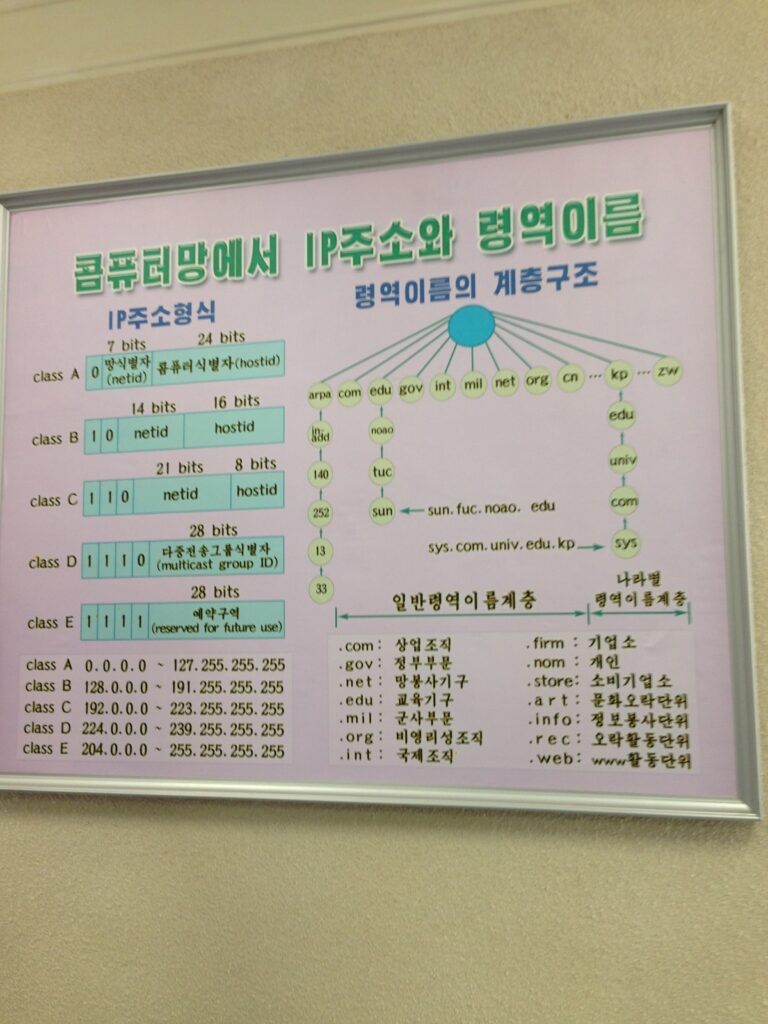



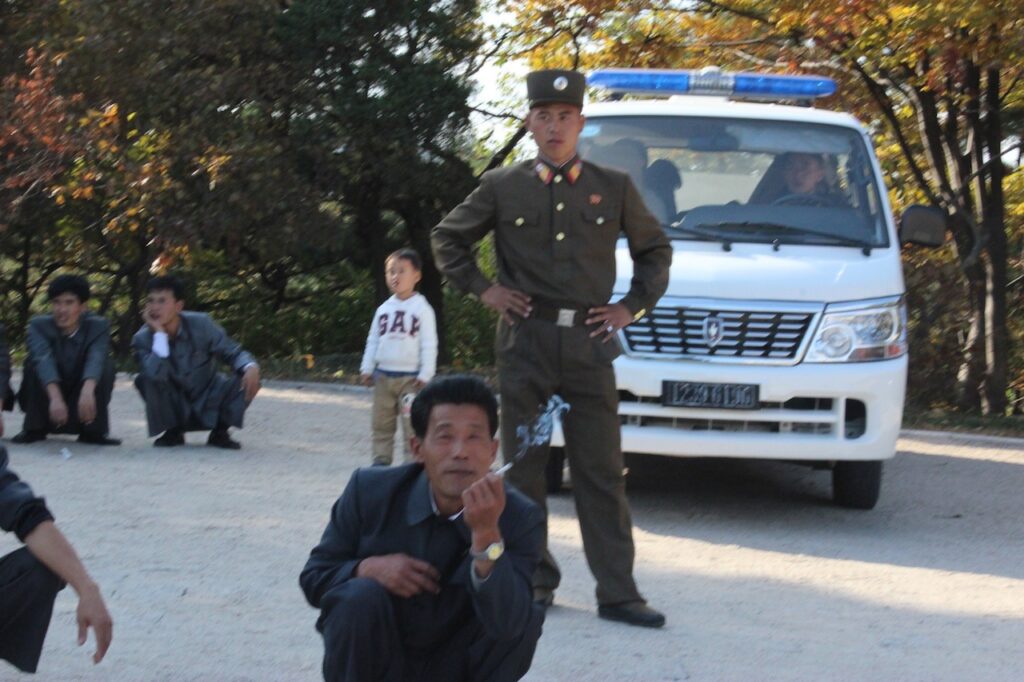
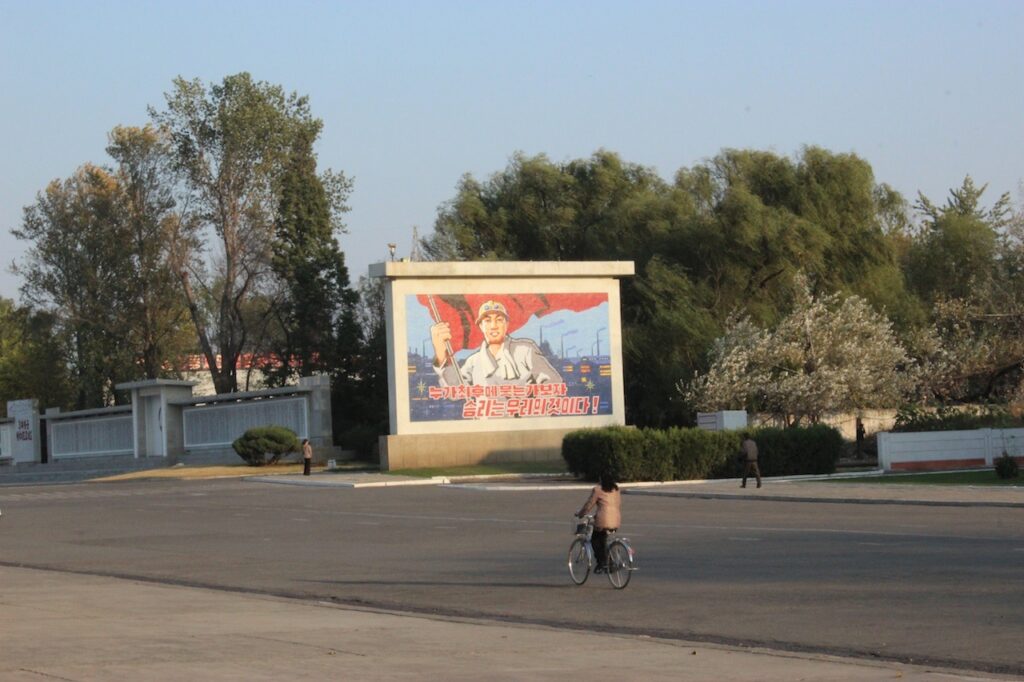
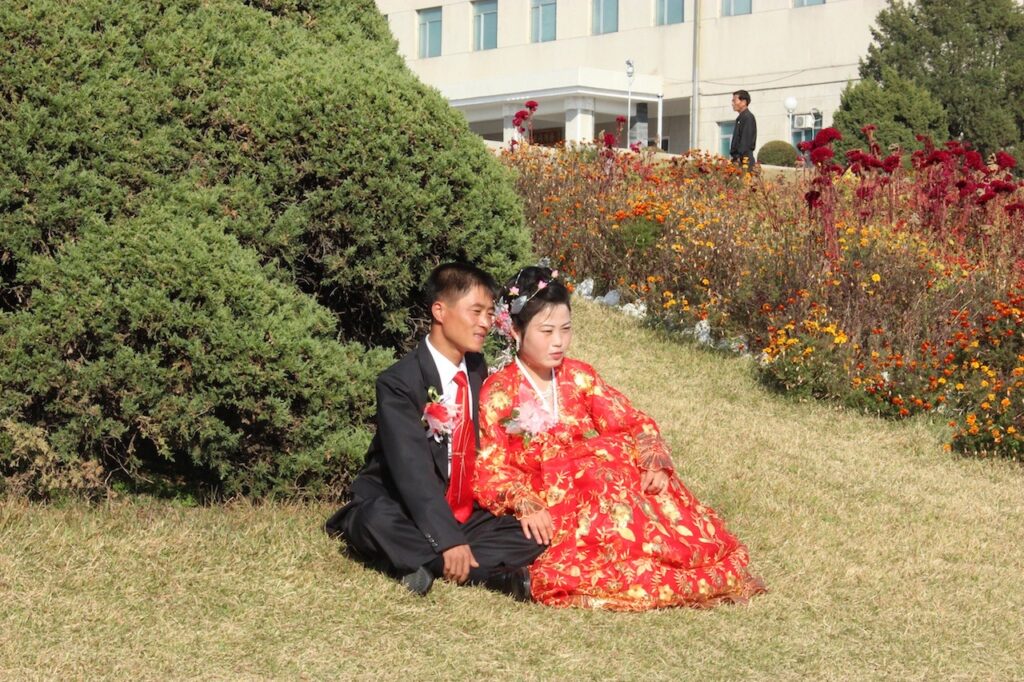
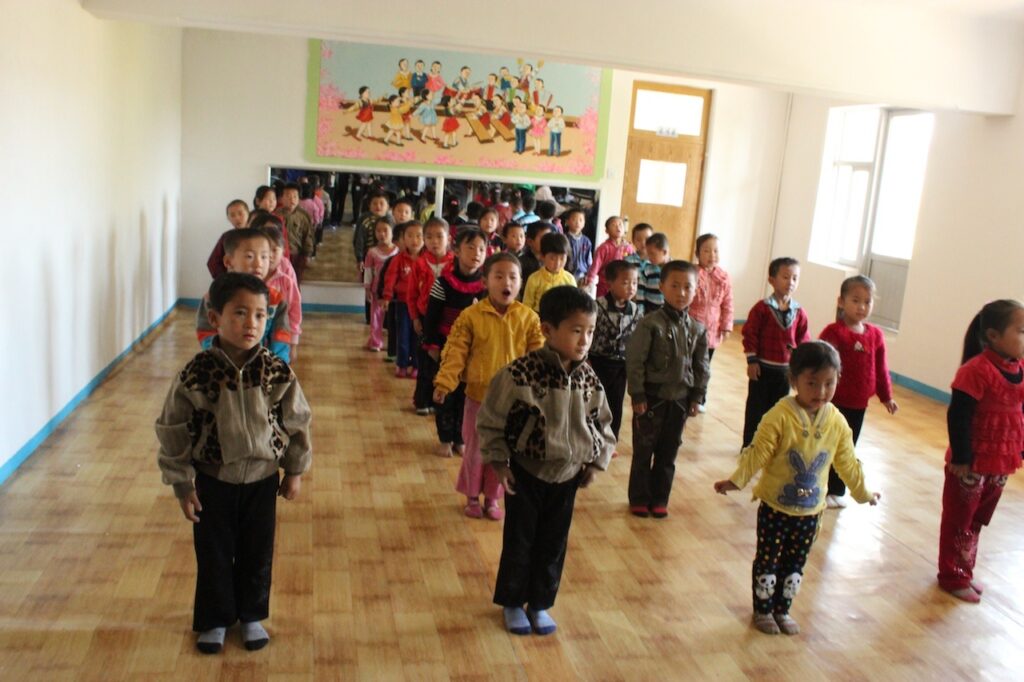
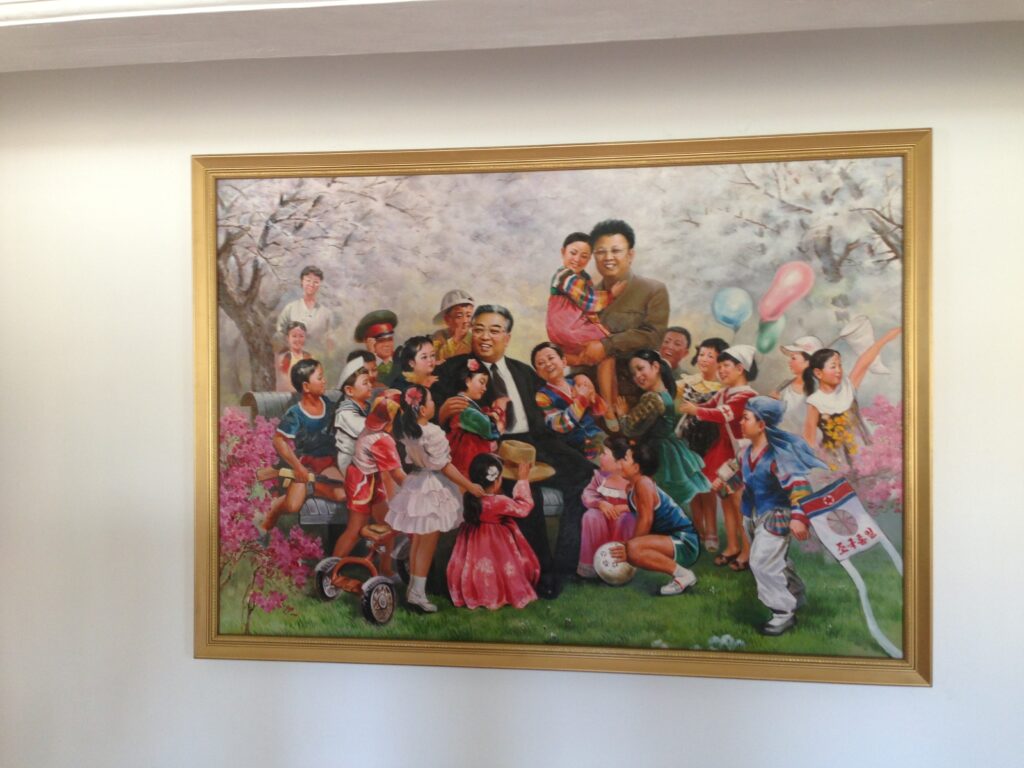
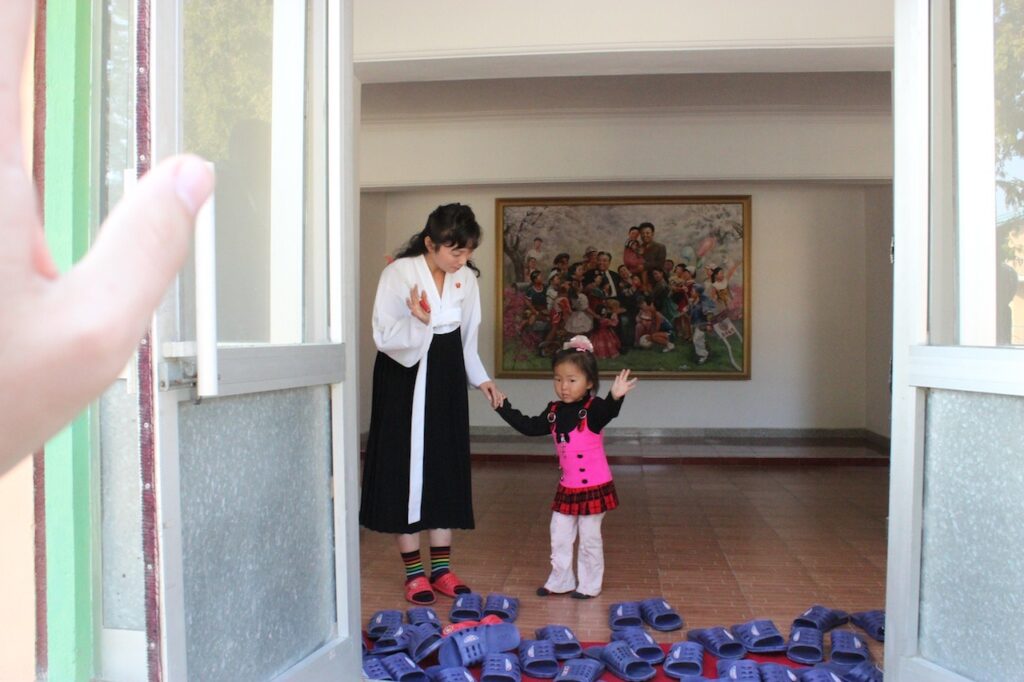
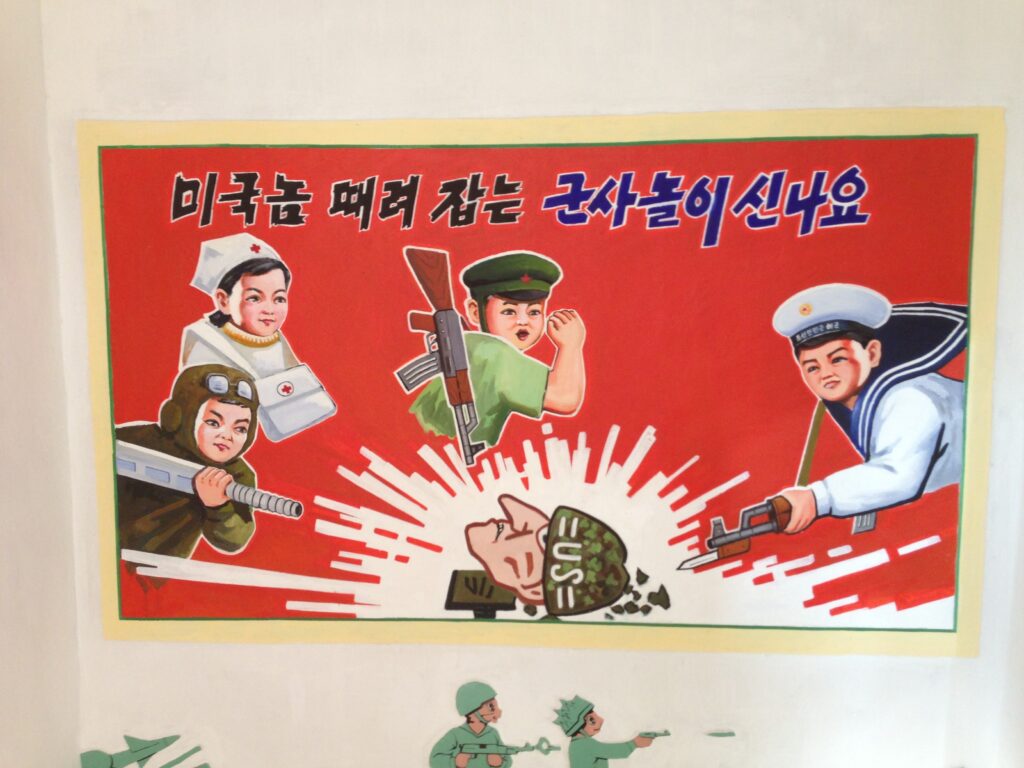

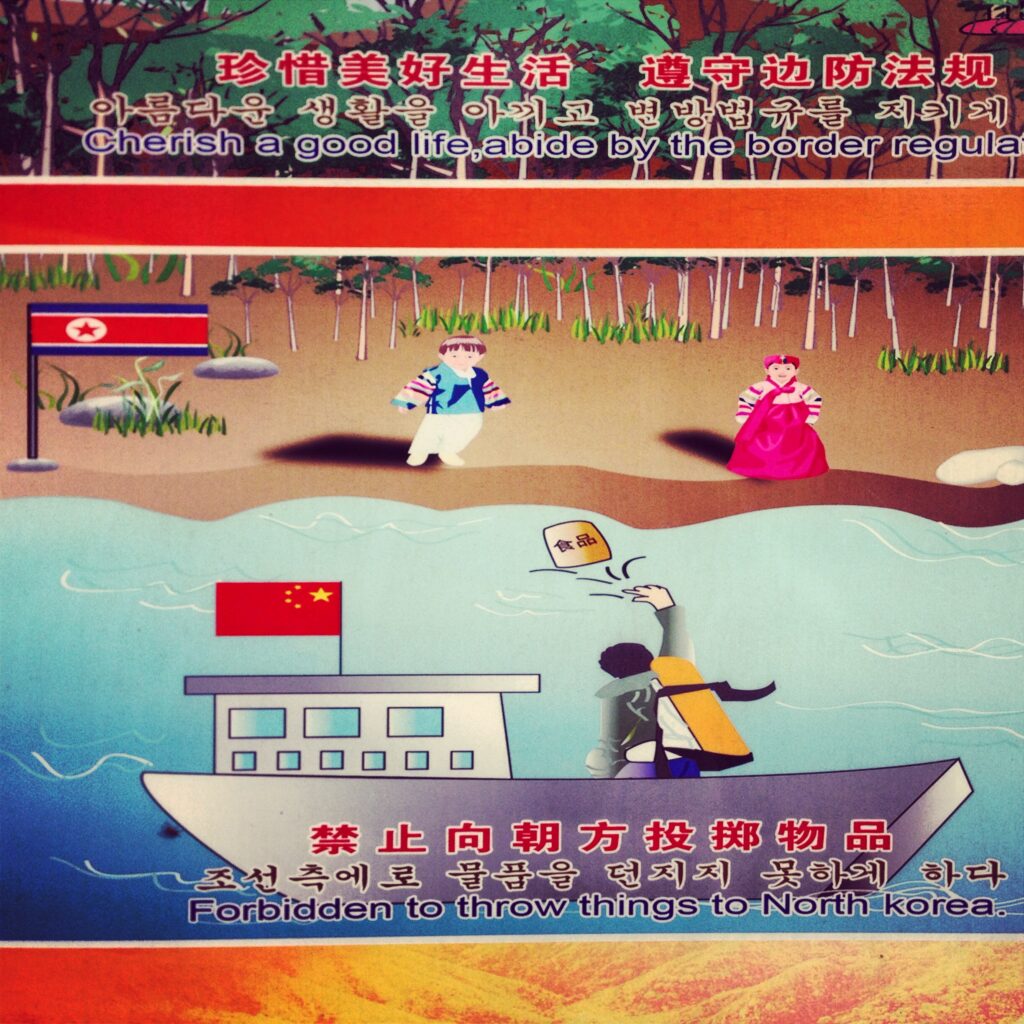


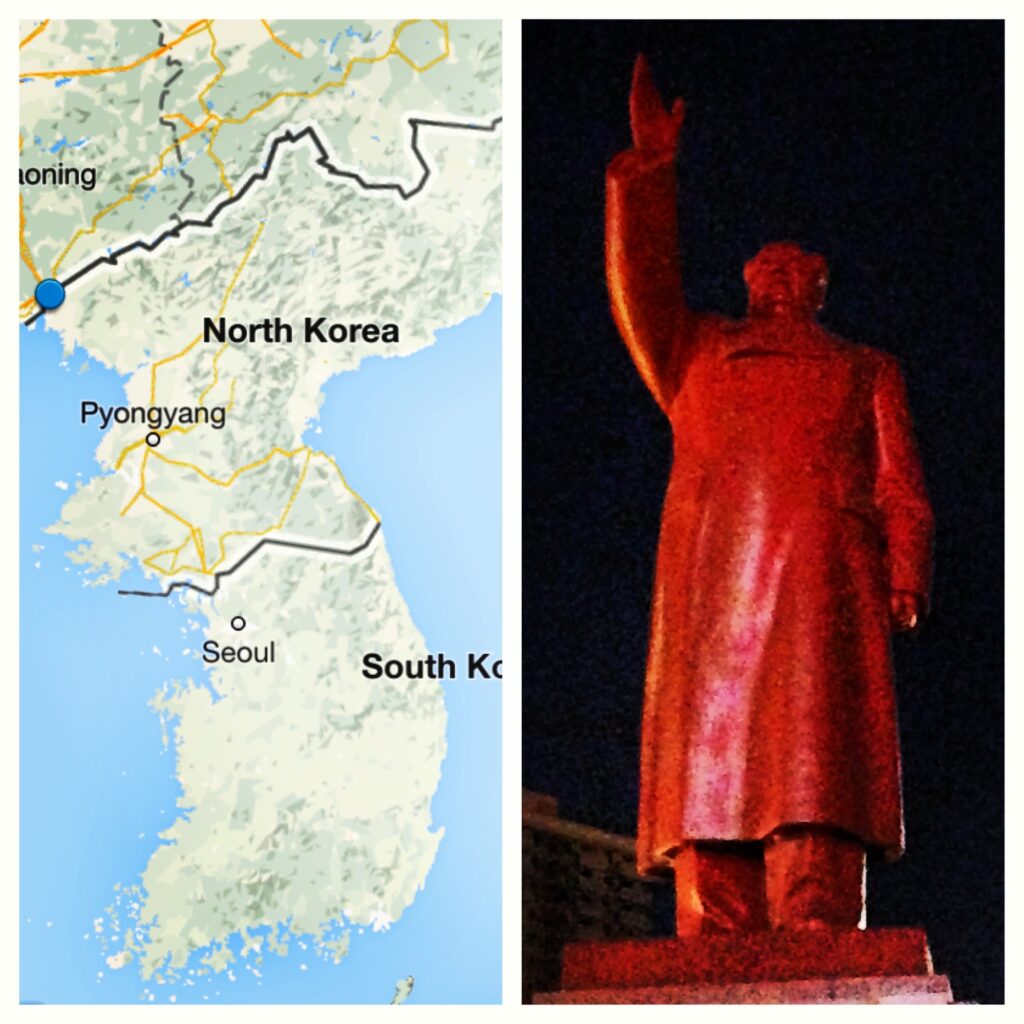
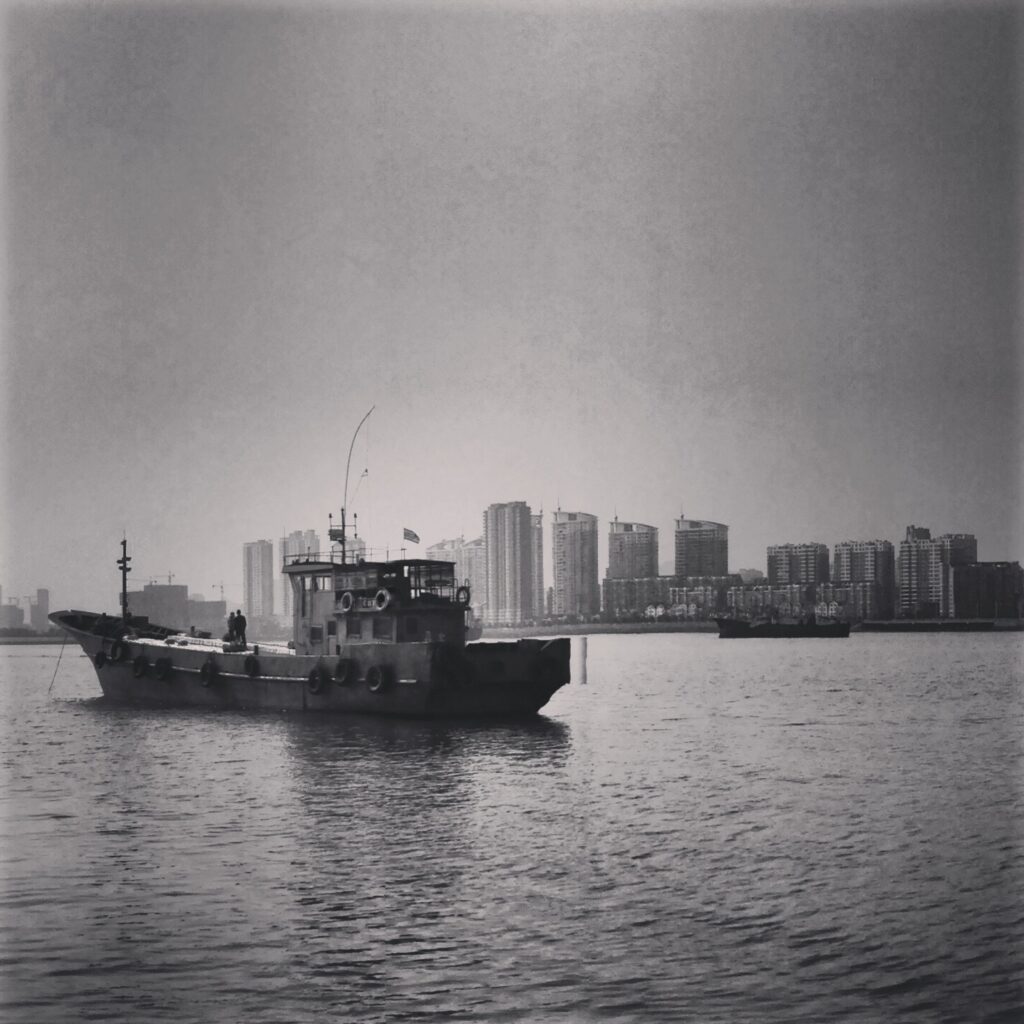
Victoria@TheBritishBerliner
Tuesday 27th of October 2020
'Nice one Freddy! What a "fun", refreshing piece!
Obviously, I've read many a report about North Korea, but I appreciate the fact that this article was more about the North Korean people themselves rather than a large dose of political issues.
Any destination that is "outside the norm" is always going to be of interest and that's quite OK.